Home & Living Inspirational interior and exterior design seamlessly blend aesthetics and functionality. Discoveries that evoke emotions and make you dream.
El Gran Canal
If you've been keeping up with me for a while, you're aware of my fondness for wood. This post-modern duplex penthouse in Brussels, Belgium incorporates plenty of it. Its airy atmosphere and a touch of tropical modernism make it a prime contender for being featured here on my sidenotes.
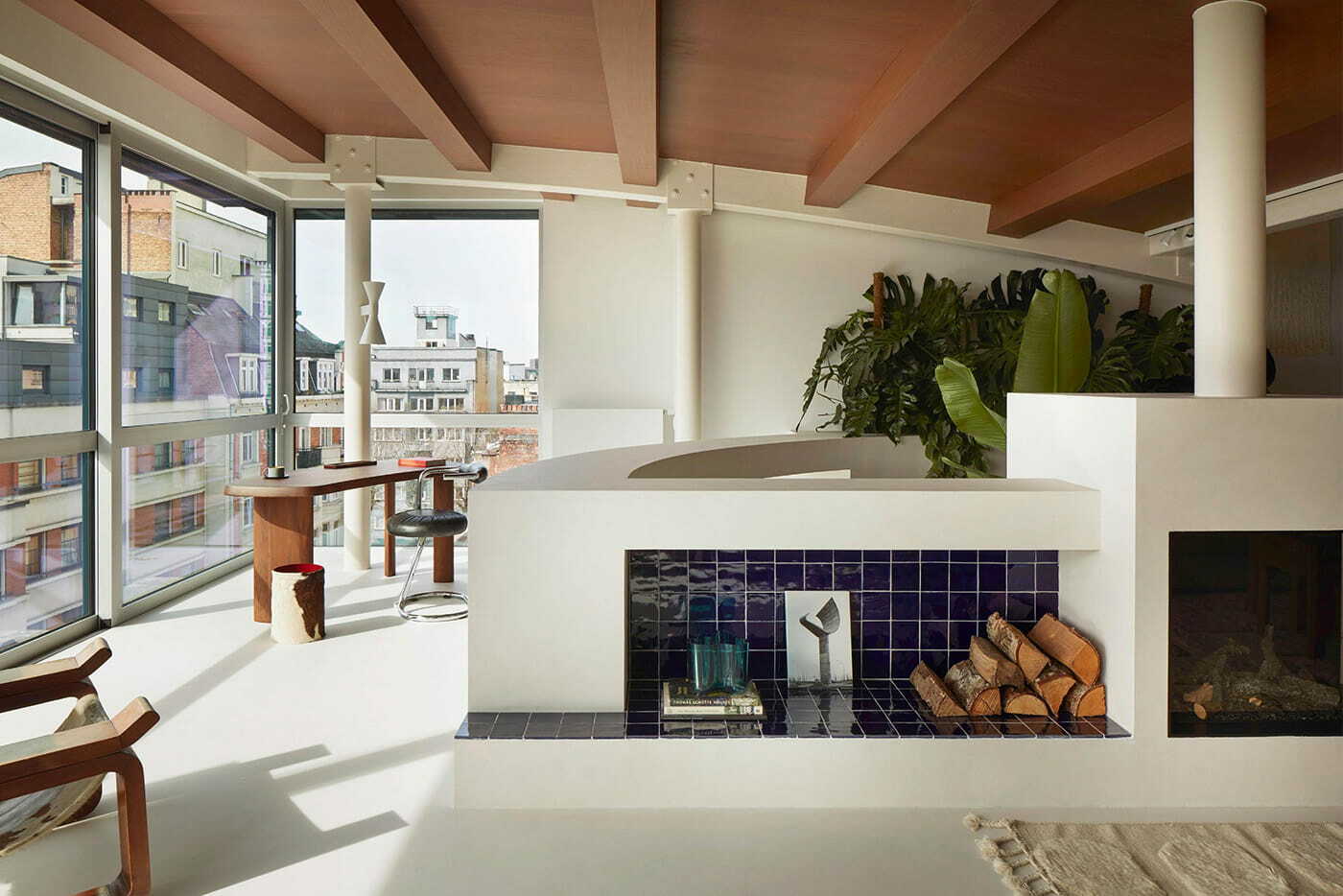
Post-modern duplex penthouse in Brussels, Belgium
Post-modern Architecture
The reconversion of two duplex apartments into a penthouse was done by Altu, founded by architect Veerle Van de Walle and engineer-architect Francesca Bonne in 2018. The owners wanted to include a yoga studio in one portion of the first floor. Within the private residence, all components, including the central wall, were removed to declutter, enlarge, and highlight the structural features of the post-modern architecture. The vaulted roof and ceiling, which provide a view of downtown Brussels, now serve as key elements in shaping the redesigned interior and circulation plan.
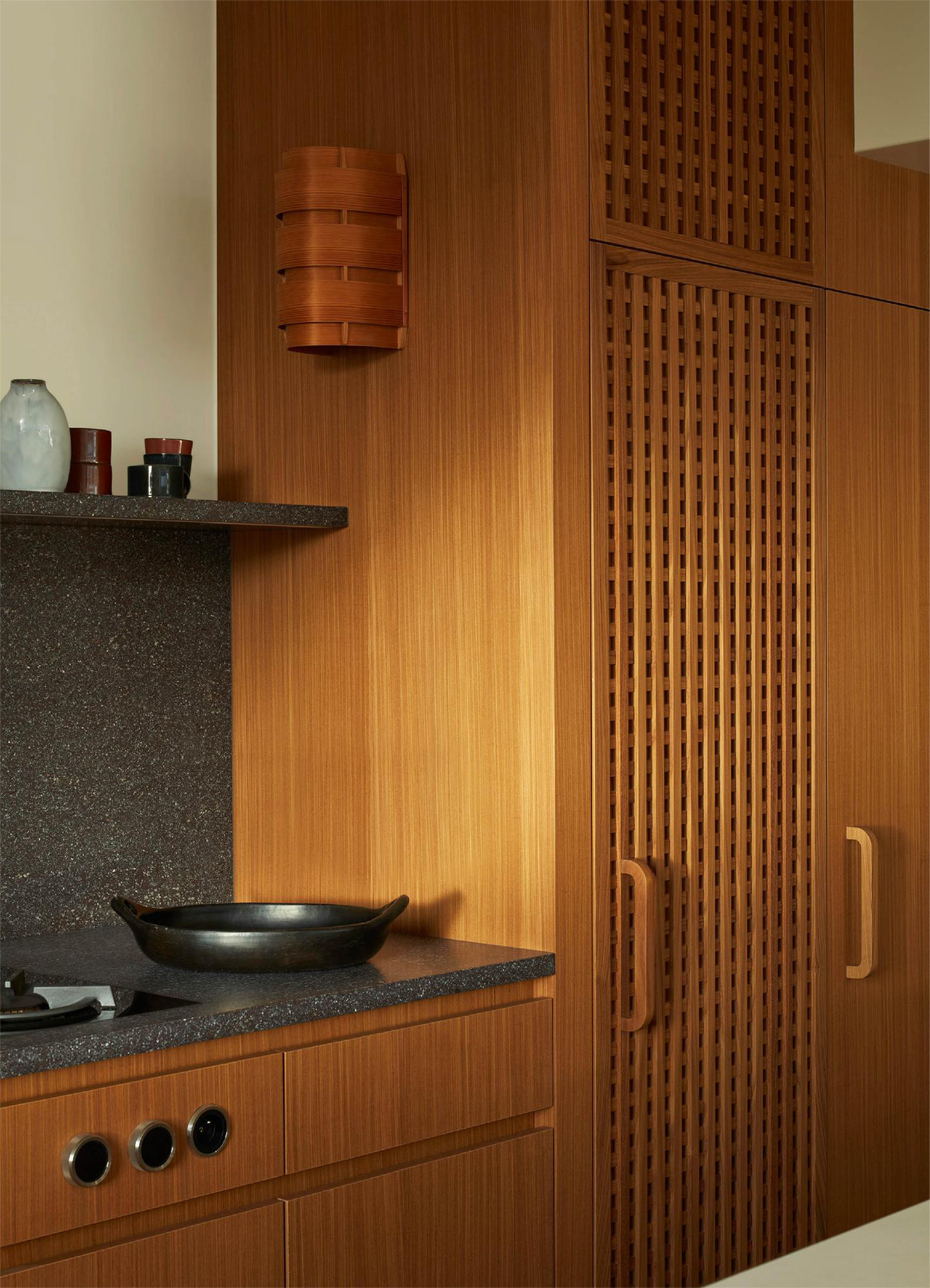
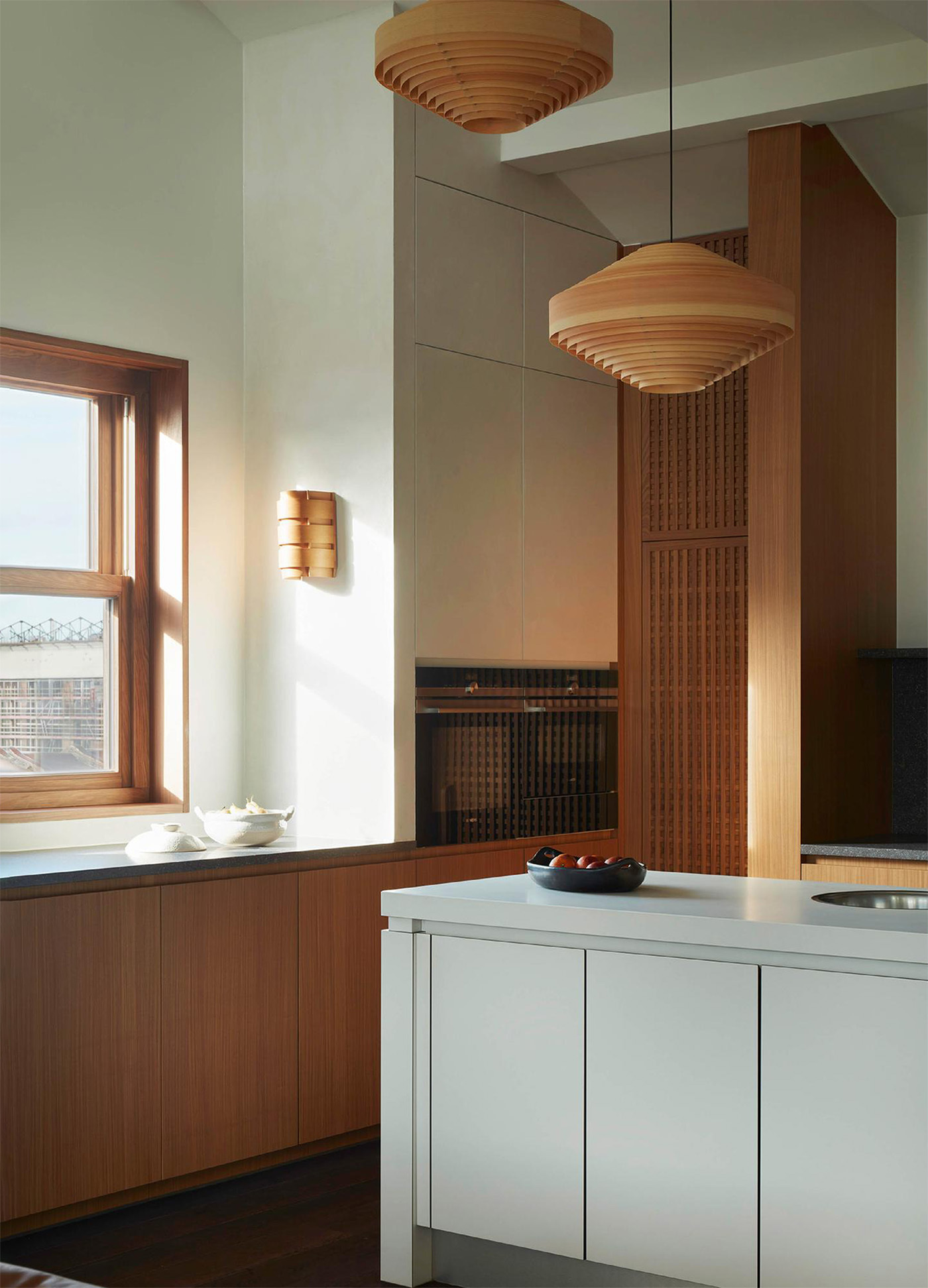
Sculptural Staircase
In the space formerly occupied by the dividing wall between the two duplexes, they introduced the standout feature of the project: a grand, curved sculptural staircase. This striking design was likely influenced by the tropical modernist aesthetic of César Manrique, the Spanish artist, sculptor, and environmentalist renowned for his transformative work in Lanzarote.
On one side of the staircase lies a void, functioning as a central atrium, allowing natural light to flow freely throughout the entire living space spanning both floors. The top floor features a fireplace, and numerous large planters have been seamlessly incorporated into the staircase, emphasising its intricate design and substantial presence. These tropical houseplants bring nature inside, a sharp contrast with the urban jungle outside.
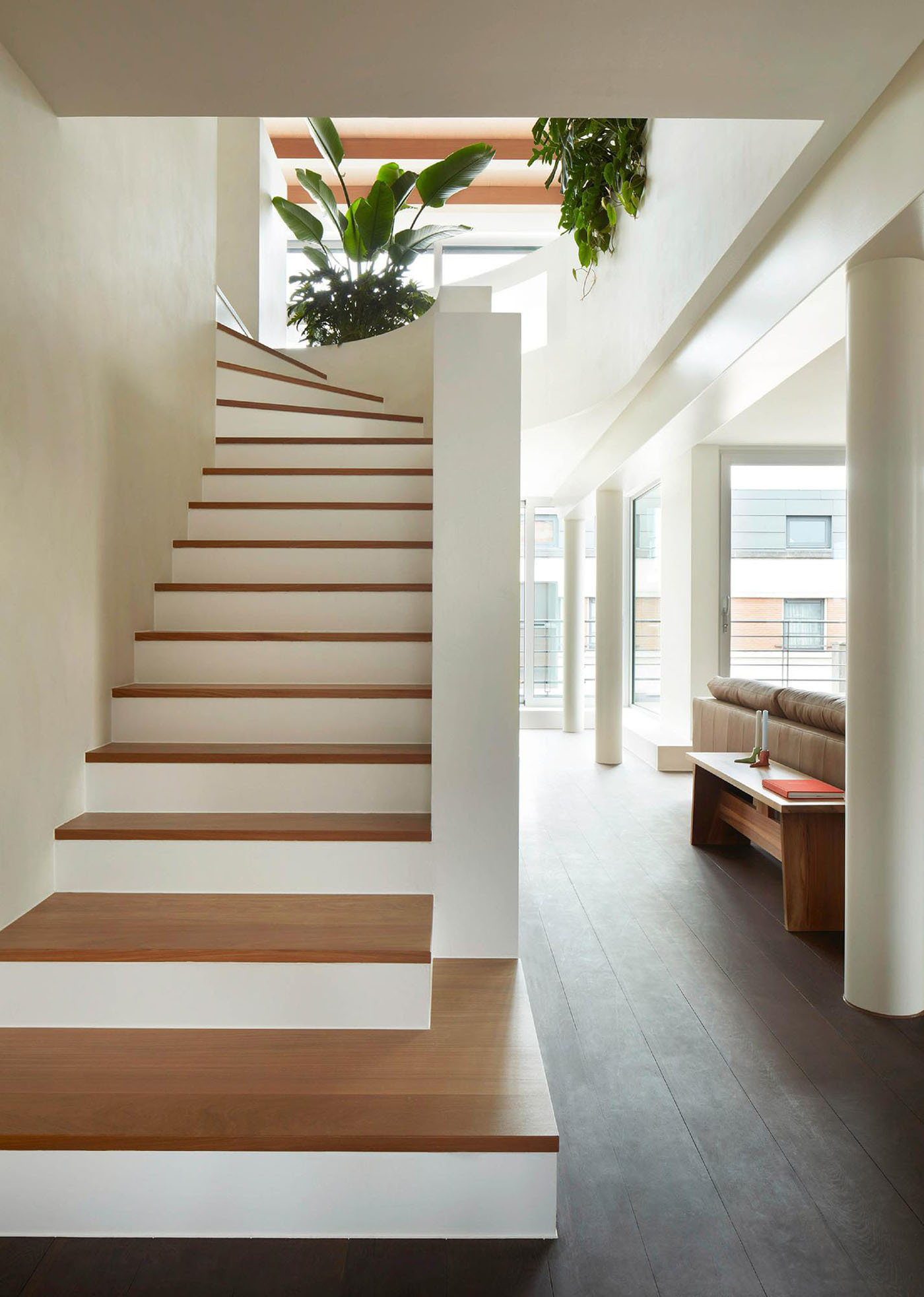
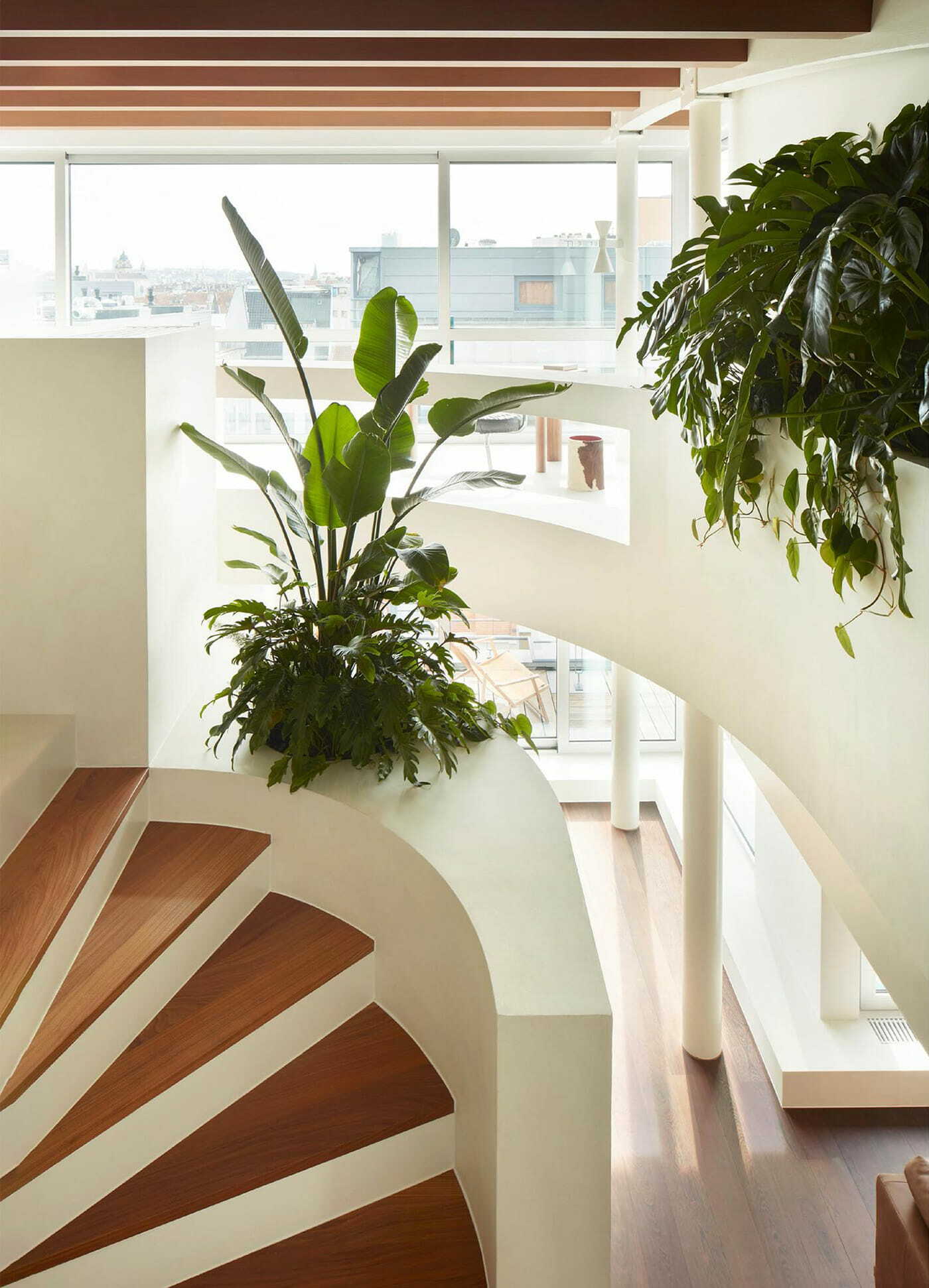
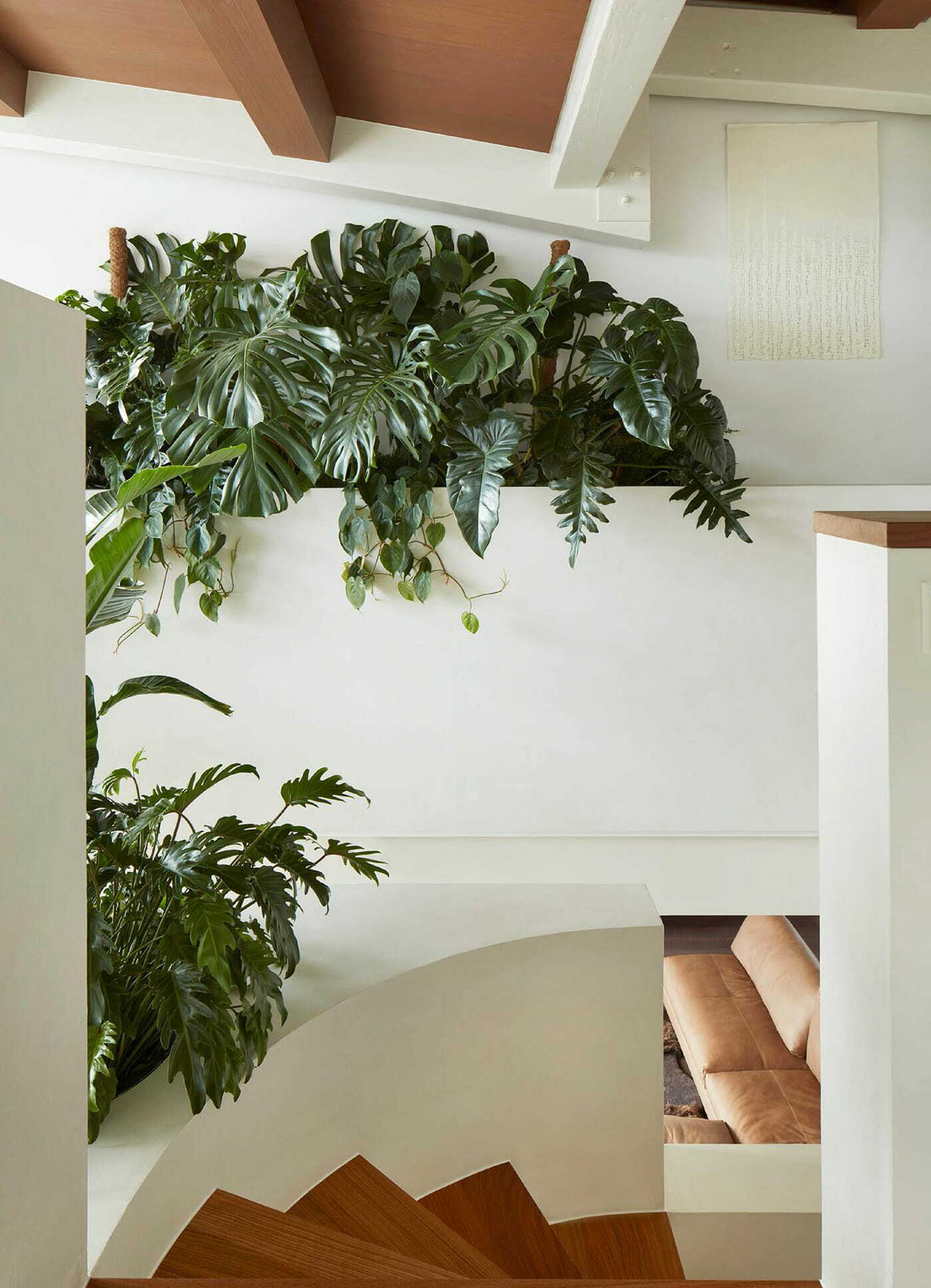
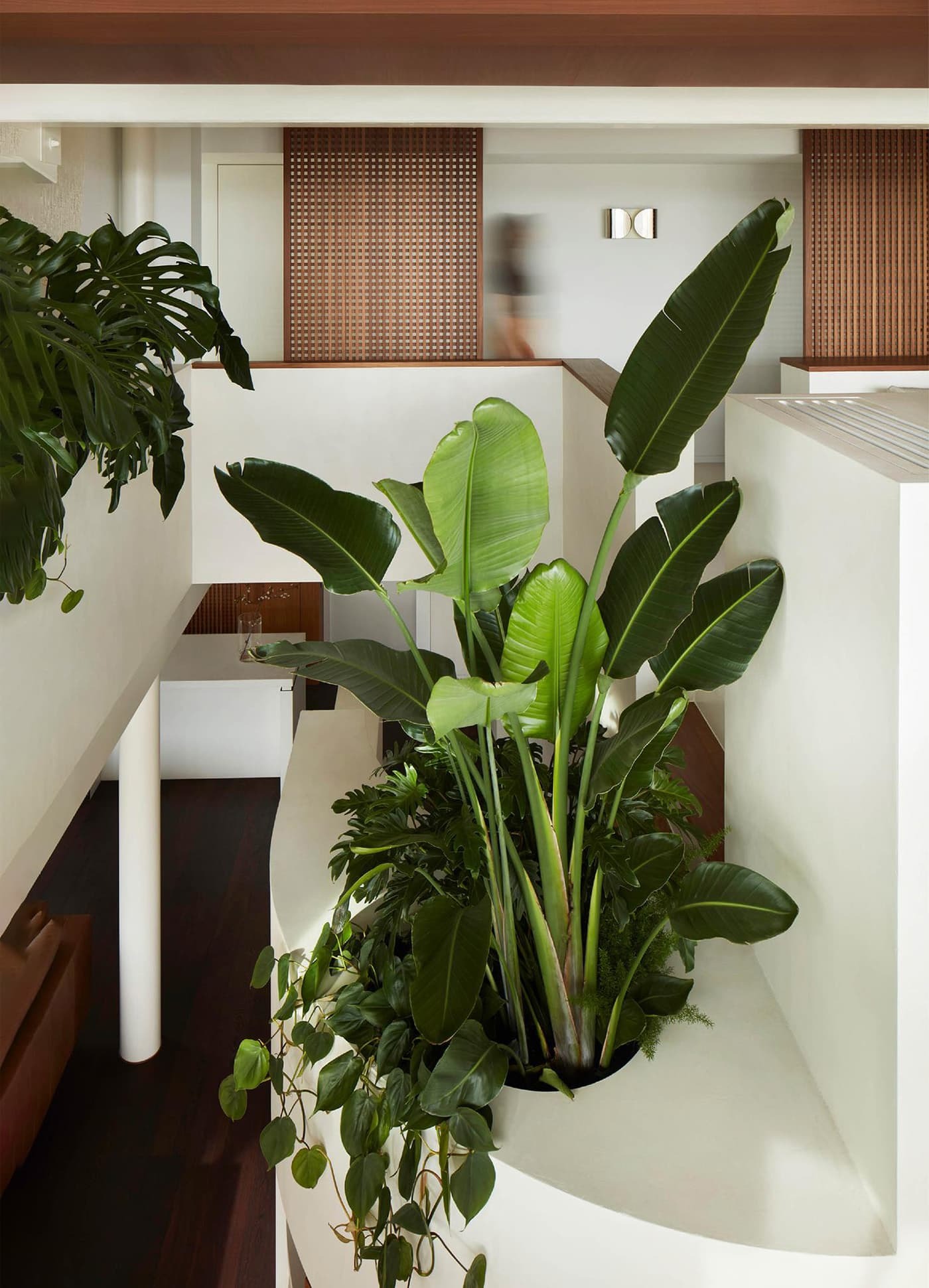
Strong Concept
The complete interior design, along with the bespoke wooden furniture, was conceptualised by Altu, who also provided guidance on selecting additional furniture pieces and items such as vintage lamps and artworks. One of these are the beautiful wood veneer lamps. This one is called '1003 Hans Pendant'. The warm glow of light filtering through pine veneer combined with an unexpectedly graphic and elemental form is the enduring appeal of this iconic design by Hans-Agne Jakobsson.
Postmodernism isn't typically associated with qualities like tastefulness, coziness, or homeliness. However, it's precisely this unconventional nature that presented us with the challenge of creating something contemporary with it.
The customisation is full of details that you do not immediately notice. Subtle details like the pattern of the wooden screens that is mirrored in the kitchen's cupboard doors, complemented by an 80s-style countertop and porphyry backsplash. Another excellent eye piece would be the custom design of the bed.
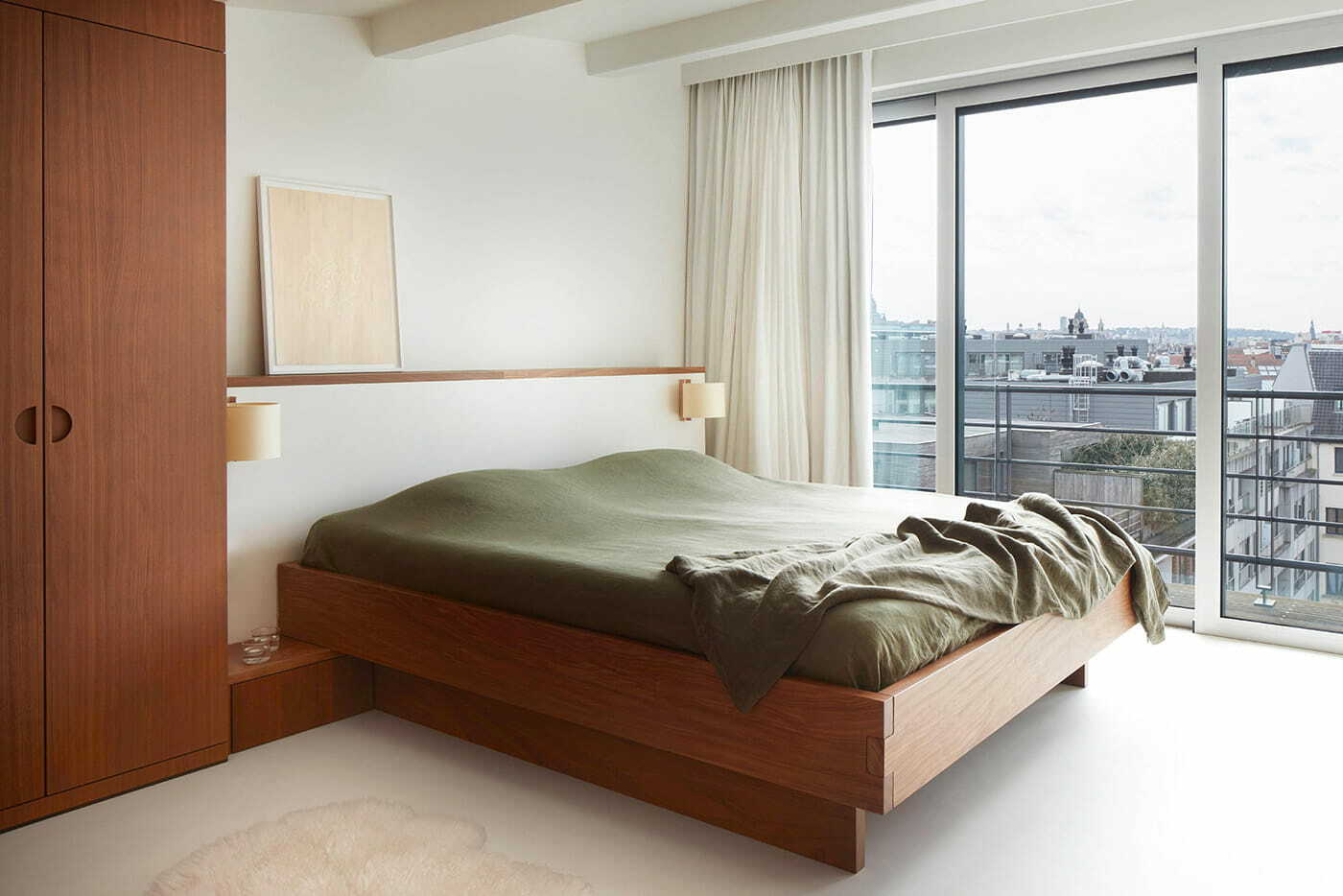
Custom made wooden furniture like this bed
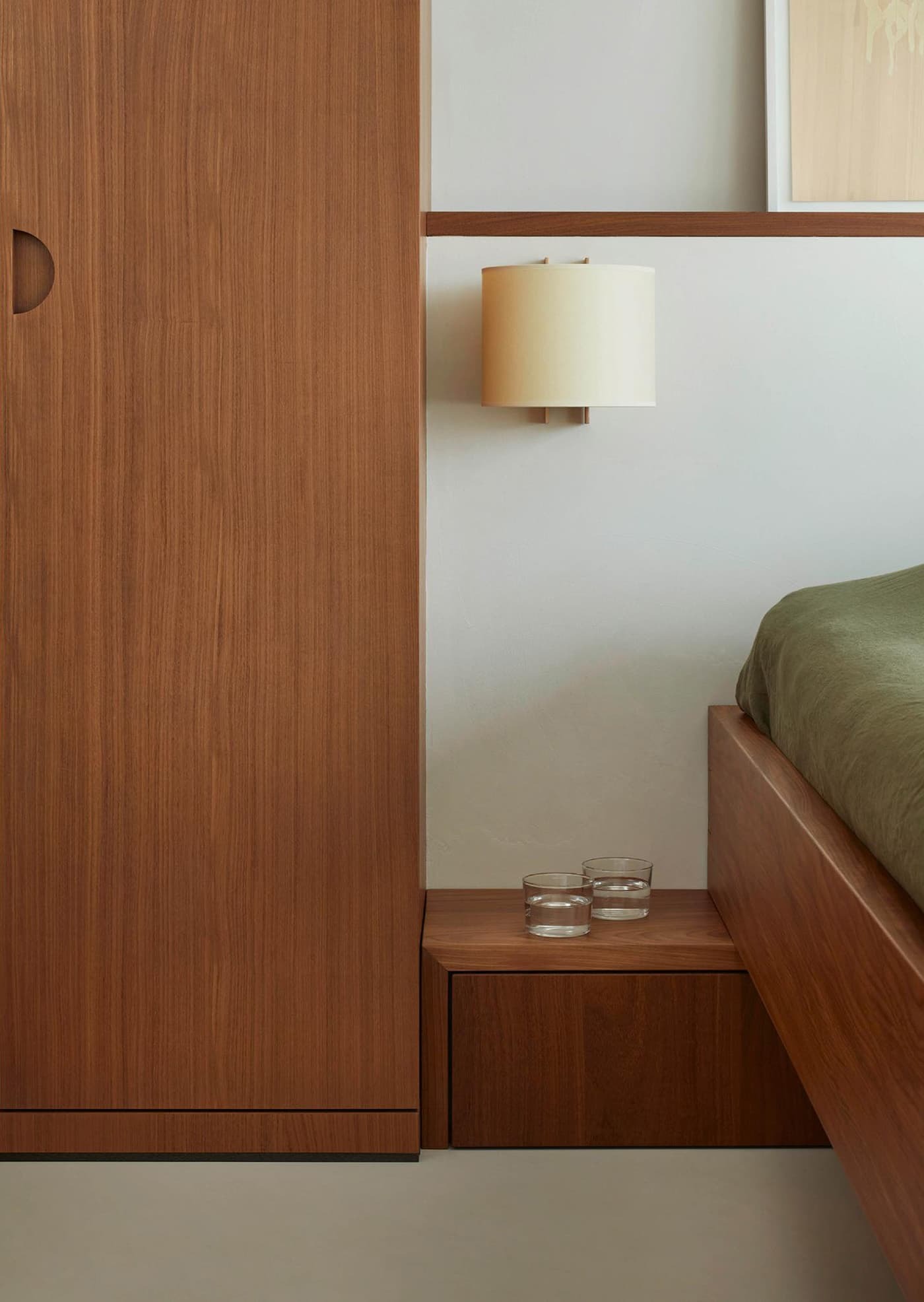
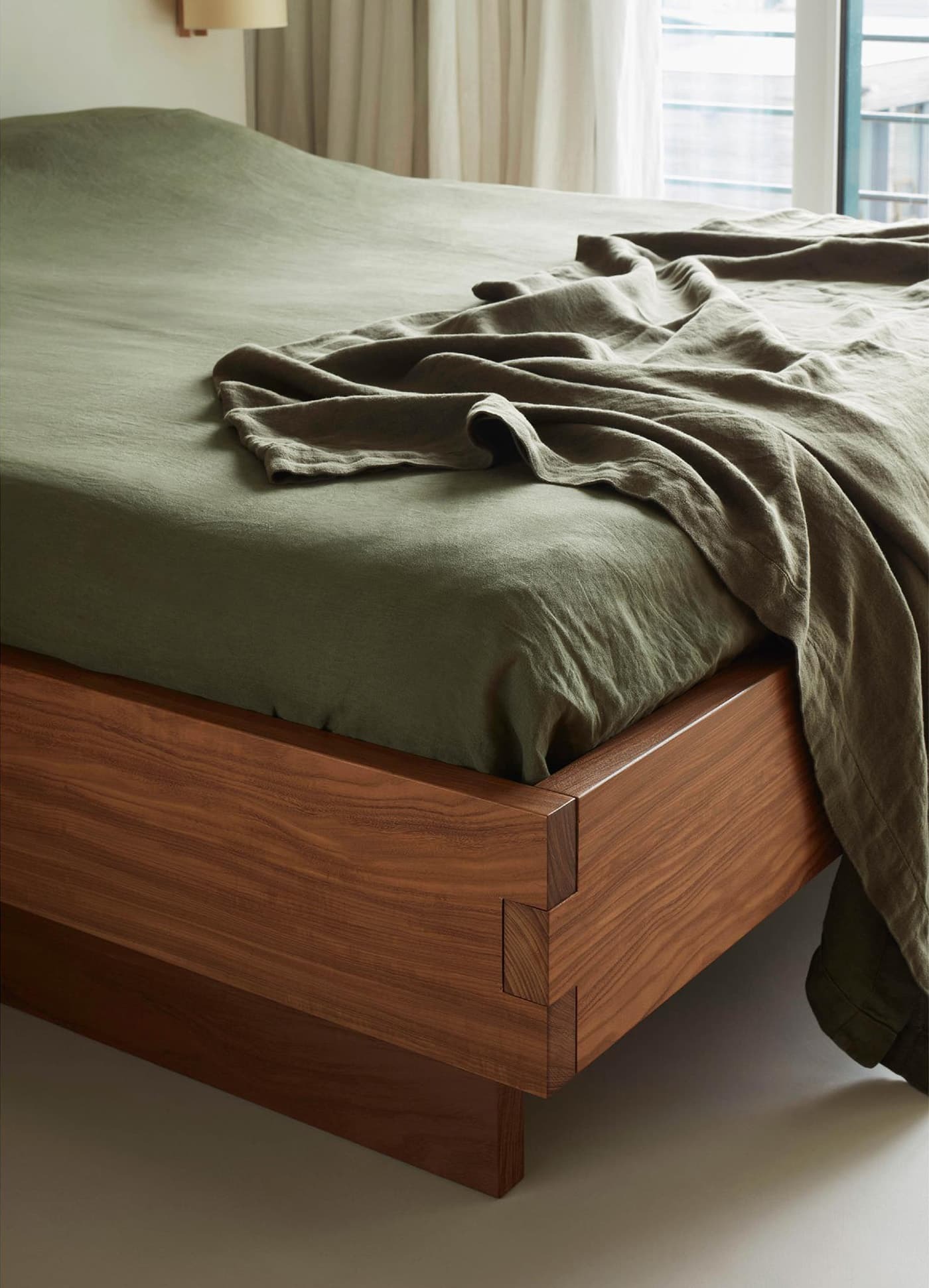
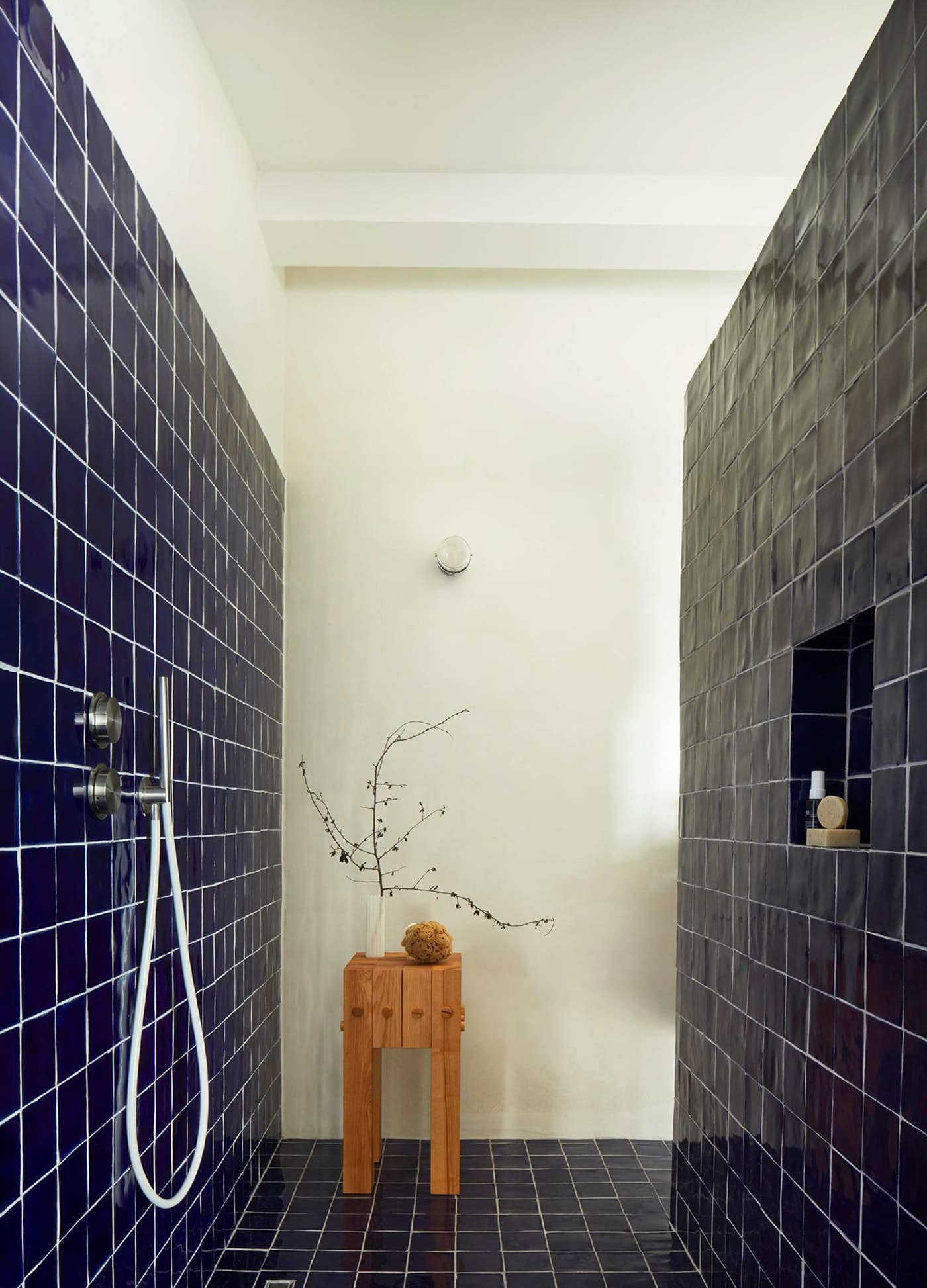
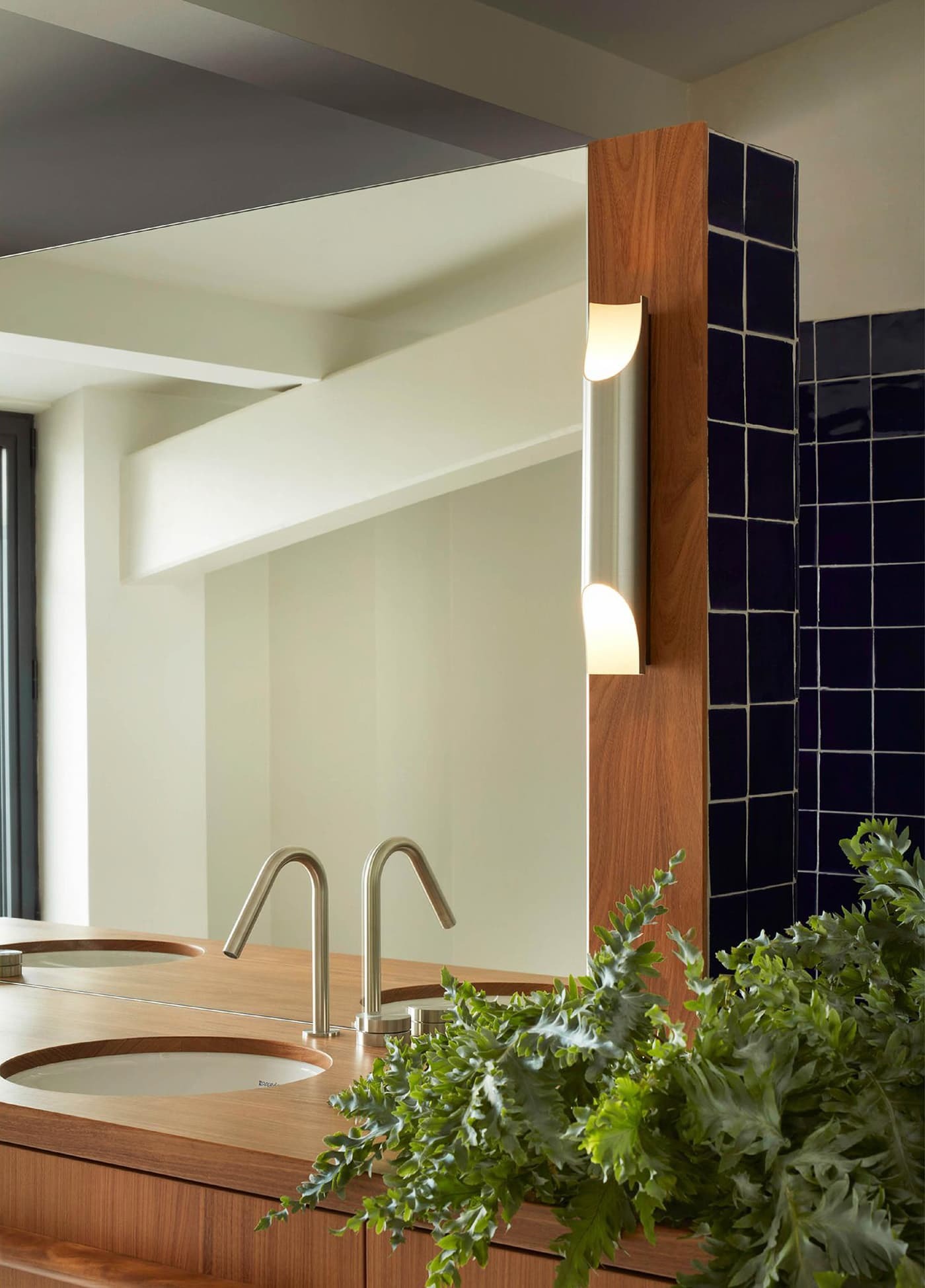
With its blue-tiled décor, the bathroom could easily be mistaken for a luxurious retreat at a high-end vacation destination. I admire that they didn’t remove all those typical 80s and 90s elements, like those striking pillars or that typical roof vault. They accepted it and put their own spin on it. Beautiful design work!
Clean Air In My Home
In a prior Sidenote, I discussed the significance of ventilation in our homes. This subsequent article addresses the unsettling reality that the air you introduce from outside may not be as clean as perceived. Given its invisibility and predominantly odourless nature, it becomes essential to visualise this by employing a device capable of revealing particulate matter (PM). Particulate Matter (PM) comprises solid and liquid particles suspended in the air, categorized as coarse, fine, and ultrafine.
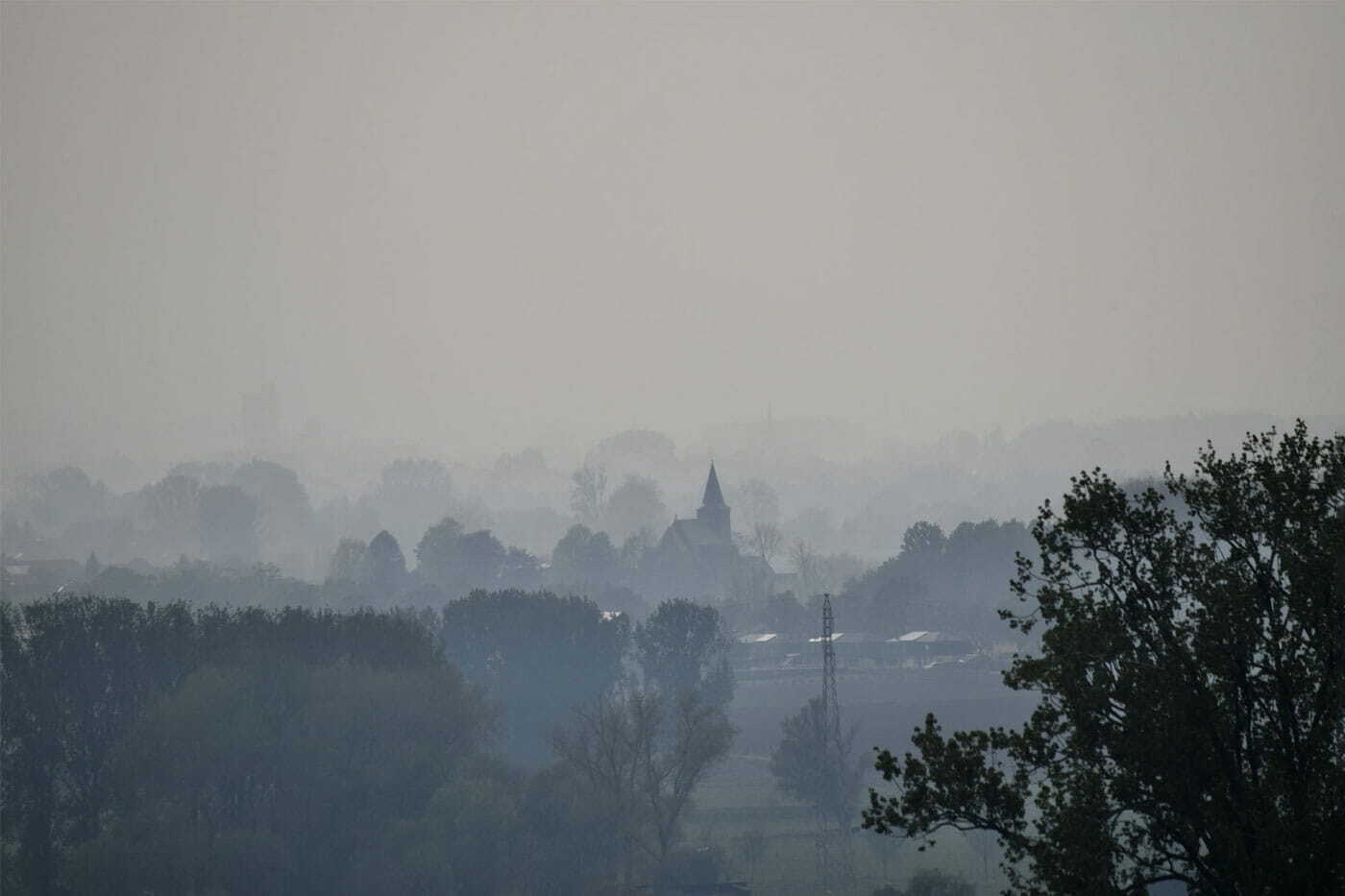
Oudenaarde, Belgium.
Many people might not be aware, just as I once was, but currently, 98 percent of Europeans are affected by air pollution. The concentrations of particulate matter frequently exceed the World Health Organization (WHO) standard of 5 micrograms per cubic meter, with at least two-thirds of the population experiencing levels that are double the recommended threshold.
Particulate matter originates from combustion processes in the exhaust gases of diesel engines and industrial operations. It is also generated through chemical reactions with ammonia in the agricultural sector and the heating of buildings.
'Clean' Diesel & Petrol
There are still individuals and lobbyists who believe/promote that 'clean diesel' exists and that the newer ones with Euro 7 and Euro 6 standard are A ok, so we should continue to use them as technology solved the problems. A quick bicycle ride wouldn’t have to take long to reveal the stark reality of their cleanliness—or lack thereof. Petrol isn’t much better.
Wood
The burning of wood is another factor with a notable impact. One can only hope that it is beautifully dried wood and not fiberboard, plywood, painted wood. Trust me, you can detect the difference by the smell.
'Green' Pellets
Oh and let’s not forget the ‘magical’ green pellets. The marketing sounds wonderful. “Burning wood or wood pellets brings us a little closer to nature. It invites us to use energy more consciously. Because heating yourself with wood or pellets is CO2 neutral. It does not produce greenhouse gas emissions”.
The necessity to burn them still contributes to increased pollution exposure by adding more ‘Ultra Fine Particles’. To get a good idea of how small these particles actually are, you need to know that one millimeter is one thousand micrometers and one million nanometers. The unit for the UFP concentration is particles/cm³. The unit for PM0.1 is micrograms per cubic meter (µg/m³). Ultrafine Particle (UFP) particles are so minuscule that, upon inhalation, they enter your bloodstream directly and have the potential to cause damage anywhere in your body. See illustration below for context.
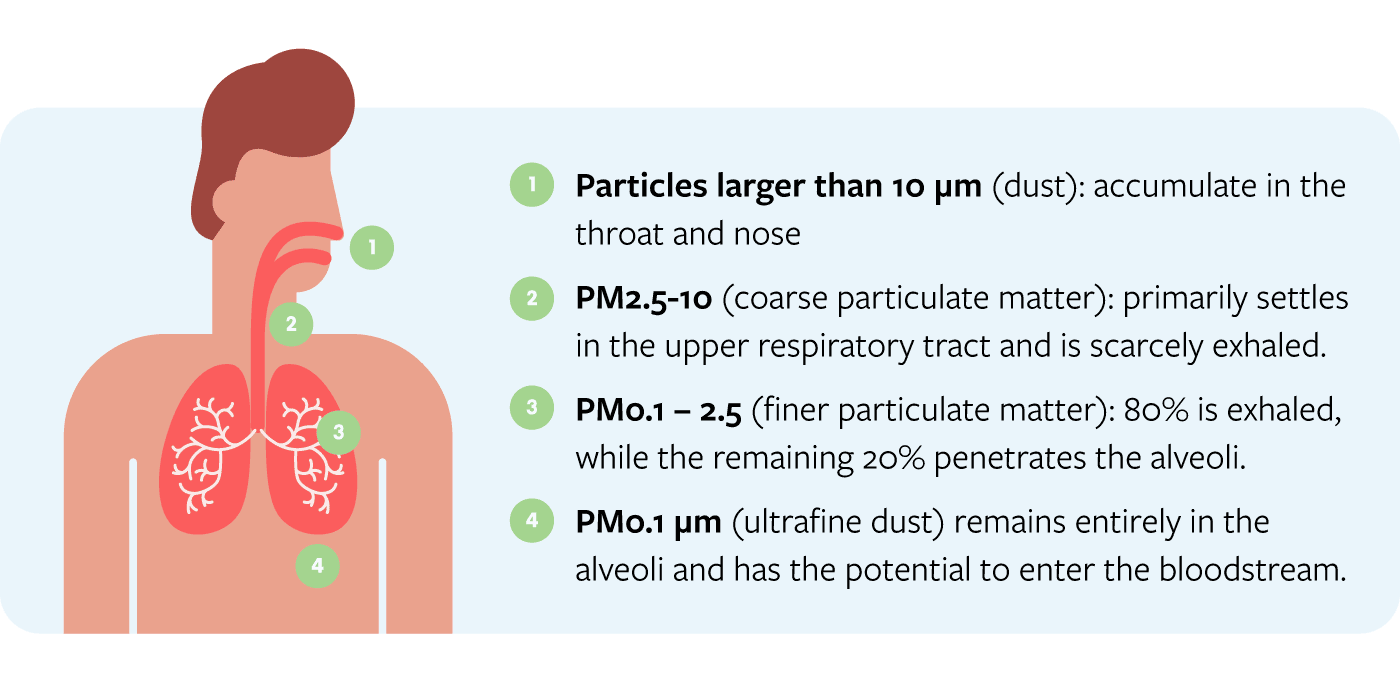
How particles enter the human body.
Every so often, I catch the scent of burning wood through the ventilation system when the wind carries it in the wrong direction, usually when one of the houses in the neighborhood decides to create a ‘cozy’ atmosphere by burning wood. If you ask yourself ‘which type of stove pollutes the least?’ You can find that out on the official site of the Flemish Environment Agency. (article in Dutch but you can translate it)
Premature Deaths
Roughly 300,000 premature deaths within the European Union are attributed to polluted air each year. Additionally, the burden is heaviest on the smallest lungs. Children, who breathe at a rate twice as fast and frequently through their mouths, face increased exposure to air pollution. Their proximity to the ground, where pollutants tend to accumulate, further heightens the risk. More than 90 babies die every week in Europe from air pollution (UNICEF).
A recent investigation conducted by the European Association for Medical Oncology (ESMO) indicates a potential association with breast cancer. While this connection has been proposed previously, a significant 20-year French study, involving thousands of women, now reveals that the risk of breast cancer rises by 28 percent with a 10 microgram per cubic meter increase in exposure to the most harmful dust particles—those smaller than 2.5 micrometers (PM2.5). This difference is roughly equivalent to the contrast between rural and urban areas in Europe.
In September 2023, the European Parliament resolved to harmonize the EU standards of 25 micrograms per cubic meter with the more rigorous guidelines set by the World Health Organization (WHO). However, the implementation of this adjustment is deferred until 2035, pending an agreement with the member states. The aim is to have no air pollution by 2050 in the interests of public health, ecosystems and biodiversity.
Air Purifier
That's enough introduction to finally address the topic I intended to write about. I felt it was necessary for you to better comprehend the context. As mentioned earlier, the initial step involves using a 'smart' sensor, such as the Ikea product called 'VINDSTYRKA'. This device features a straightforward color scale and a numerical indicator. Once you determine the pollution level, the next step is to purify the air using an air purifier. For now, let's focus on Ikea and discuss the 'STARKVIND'. While I can't guarantee its effectiveness, it is known to be an affordable option. To make it ’smart’ you need to add it to the IKEA Home Smart-app otherwise it’s just ‘dumb’ with a rotary and push button. The reviews are quite good. Just like the other smart products from IKEA, the underlying protocol for this smart air purifier is ZigBee. And that of course opens doors to other integrations. You also have support for Google Home and Google Assistant. There is also support for Amazon Alexa, Siri and Apple HomeKit.
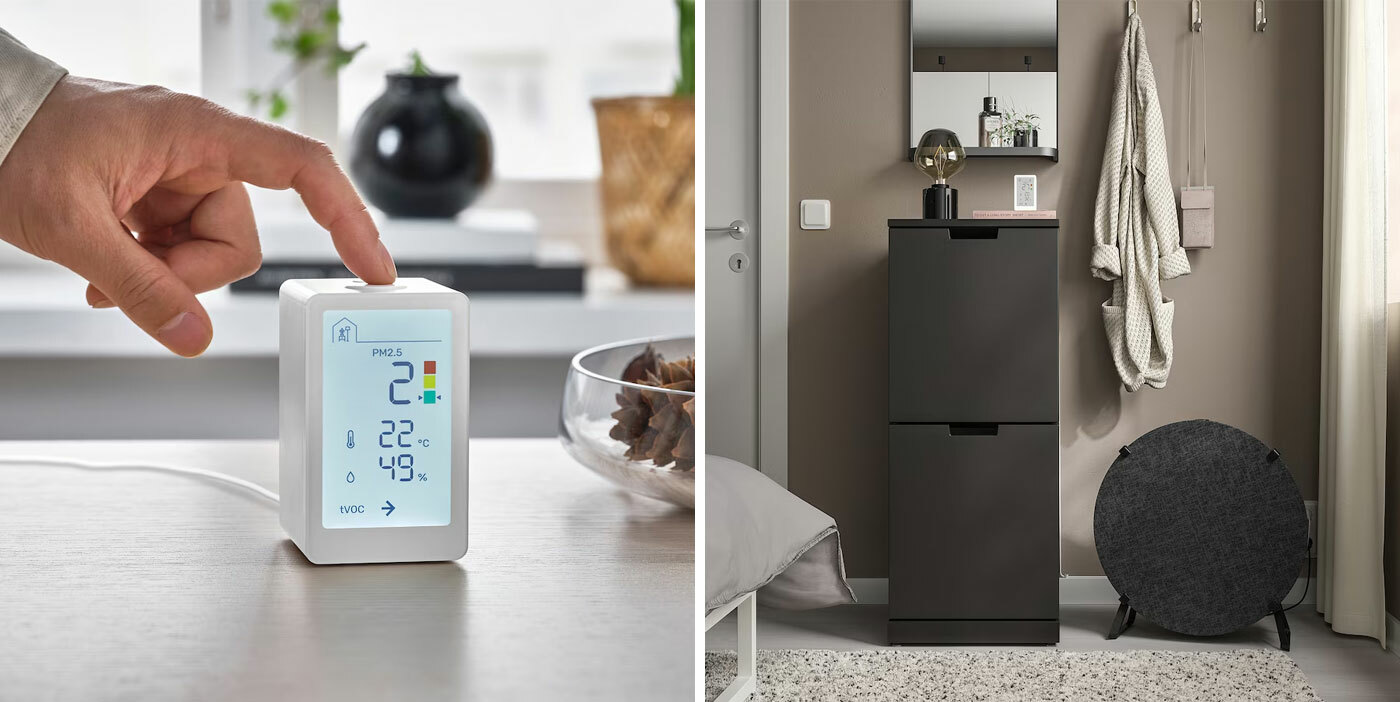
Ikea Vindstyrka and Starkvind.
I personally own the VINDSTYRKA, but for air purification, I prefer using the AEG AX 9. Although it's pricier than the Ikea model, I appreciate its aesthetic and, more importantly, its effectiveness. I acquired this device before installing a ventilation system, and it used to kick in almost every time I opened the windows. On numerous occasions I had numbers that were in the very poor scale.
While it operates less frequently now due to the ventilation system filters also capturing particles, it still plays a vital role in my home. Indoor activities also generate particulate matter and nitrogen dioxide, by burning tobacco, wood and candles and cooking with gas. This device will make it apparent how harmful these activities can be.
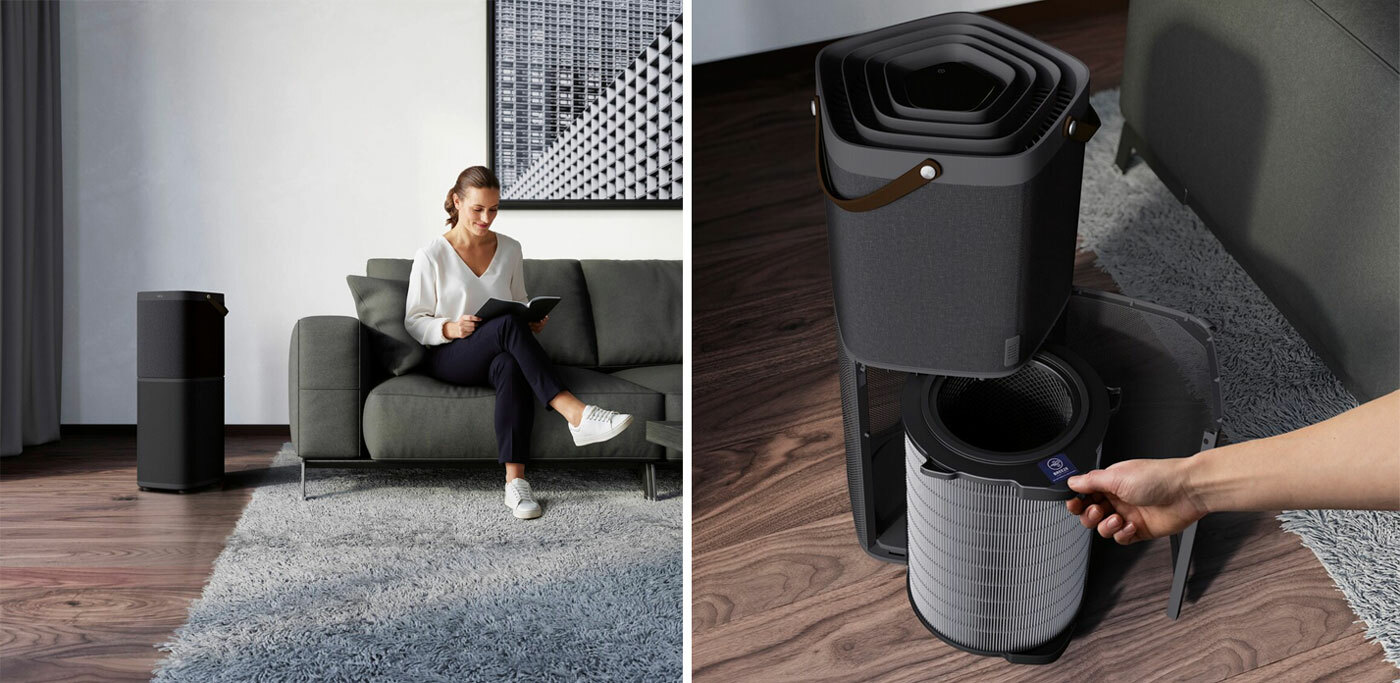
The AEG AX 9 display is straightforward, indicating the current mode and color scale that you are in. By connecting it to an app, you gain access to more comprehensive data such as PM 1, PM 2.5, PM 10 levels, humidity, temperature, and TVOC (Total Volatile Compounds). TVOC measures gases emitted by certain solids and liquids, and you can track all the above mentioned metrics over hours, days, and months.
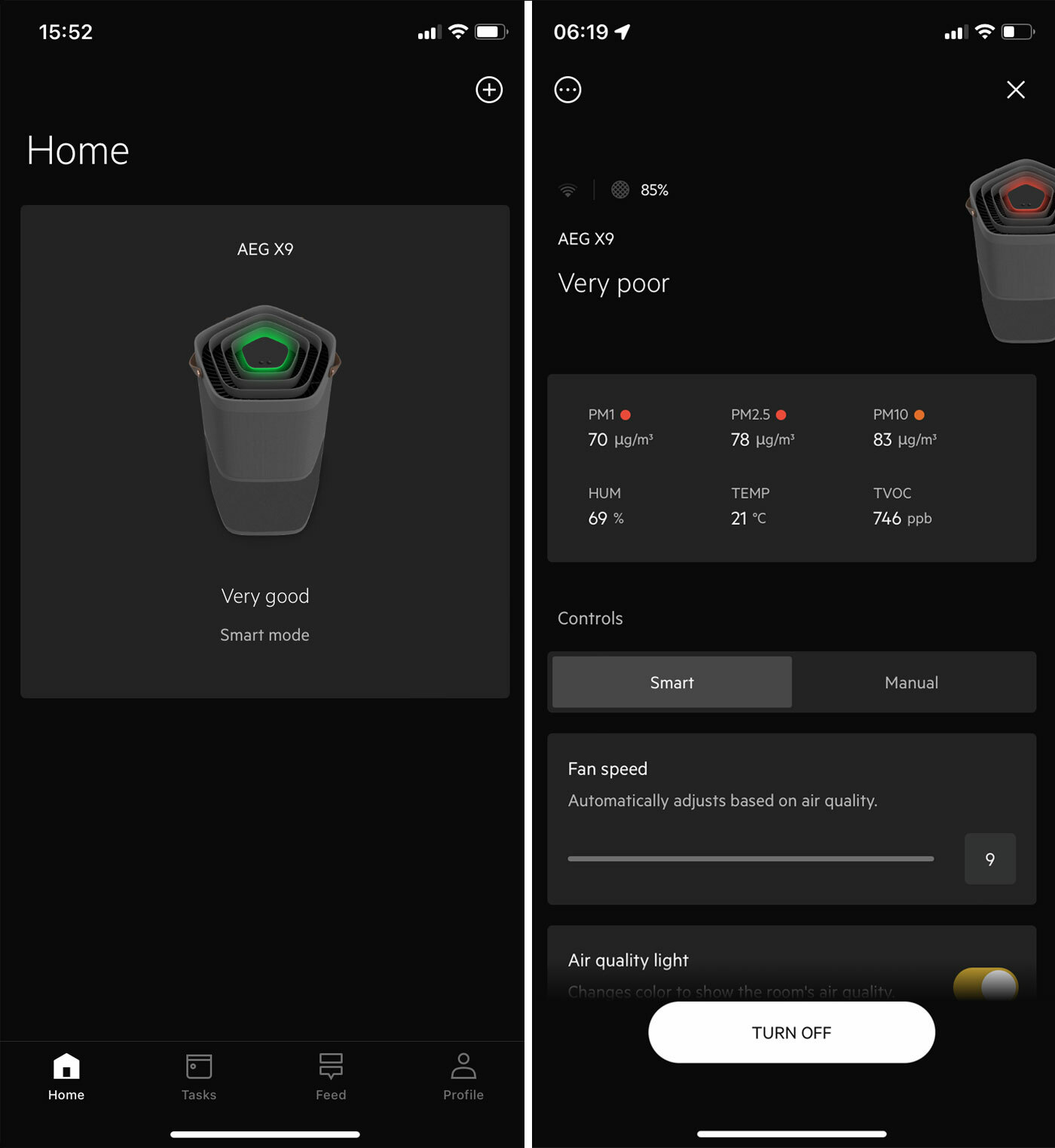
The AEG AX 9 iPhone app.
Dyson also has the Dyson Pure Cool.
What Else Can You Do?
The biggest of them all is ’Stop burning stuff’.
Walk, cycle or use public transport or share vehicle wherever possible. If you want to reduce the footprint of your food focus on what you eat, not whether your food is local. A must read by Hannah Ritchie. Eat less meat, particularly beef. Personally I only eat meat 3x a week now. When I do, I stick to 100 gram a day rule and it’s mostly chicken. Before I start doing this I consumed meat 7 days a week and in larger amounts. Honestly I’m not missing it at all.
Oudenaarde photo from Unsplash by moon-app .com
Air quality CO2 PPM's
The underestimated invisible item that is so important to our overal heath. Good ventilation has been undervalued for years. Honestly, before the pandemic, the concepts of CO2 and PPM were a mystery to me. I didn't pay much attention, except for the occasional practice of ventilating rooms by opening windows for about 20 minutes each day, albeit without a clear understanding of CO2.
What Is It?
CO2 stands for carbon dioxide and levels are measured in PPM (Parts Per Million). Before I started measuring I had no idea that air quality in closed spaces deteriorates very quickly because contaminated air is barely noticeable. The tighter your house is sealed, the quicker the air quality tends to decline. It could be argued that an older, more drafty house benefits from natural ventilation. I use to live in such a house, very costly to heat in winter and overheated in summer.
How Do You Know?
The initial step is acknowledging the presence of CO2 in our living spaces. For example by using measuring equipment such as the Netatmo Healthy Home Coach or the Smart Home Weather Station, it is possible to map CO2 and take action to prevent high CO2 concentrations. The World Health Organization (WHO) states that a room should be ventilated at least twice a day, preferably in the morning and evening. That's what I attempted, but frankly, it falls short. Why? Well, it hinges on the wind intensity and the speed at which fresh air circulates. In high winds, you can sustain a satisfactory level for longer, but in calm conditions, the space swiftly reverts to an undesirable level. 'Quickly' here refers to a matter of hours with two persons occupying the room, contingent on how well-sealed your house is. Perhaps you've observed a distinct odor in certain houses or rooms, that's the result of stagnant air. I particularly experienced this in my bedroom after a night's sleep, I admit, feeling somewhat embarrassed. I'm pretty sure that ppm levels reached 2000 or more.
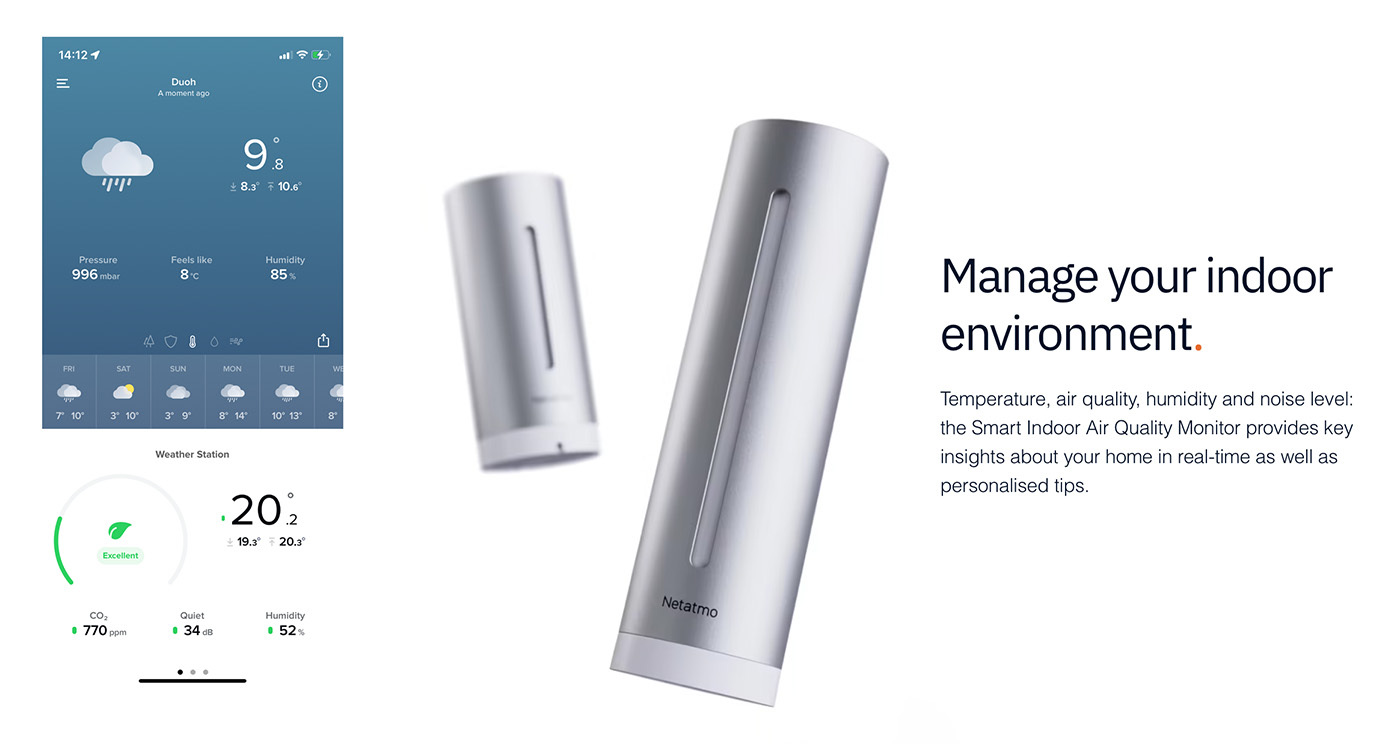
The Smart Home Weather Station also works with Apple Home.
Is CO2 Dangerous?
Yes and no, CO2 in itself is harmless or, as scientists say, inert, non-flammable and non-toxic. Yet, an elevated concentration of CO2 within a room disrupts the absorption of oxygen in our bodies, and this occurrence is undesirable. As this displacement happens, the body transitions to reduced energy consumption throughout the day, resulting in specific issues like fatigue, headaches, diminished concentration and worsening of allergies (hay fever, food allergy, etc.). In my case you can also add a stuffy nose to the previous list. Another indicator of elevated CO2 levels often manifest itself as sleep issues, with notable symptoms such as waking up feeling restless, experiencing poor sleep quality, fatigue, and headaches. Thanks to the installation of a ventilation system, I can confidently attest that the overall living comfort has significantly improved. I no longer endure frequent headaches, a fatigue feeling in the afternoon or a stuffy nose, and, best of all, my sleep pattern has seen a remarkable improvement. Details about the system, the reasons behind its selection, and the steps I took will be addressed in a subsequent article.
The governmental department (FOD Public Health, Food Chain Safety and Environment) in Belgium says if the CO2 concentration is lower than 900 ppm (or 500 ppm above the outside concentration), we consider the room to be well ventilated.)
CO2 Meter Card
The CO2 level allows you to map the degree of ventilation. On the CO2 meter card below you will gain a better insight into the PPM values and what these values mean.
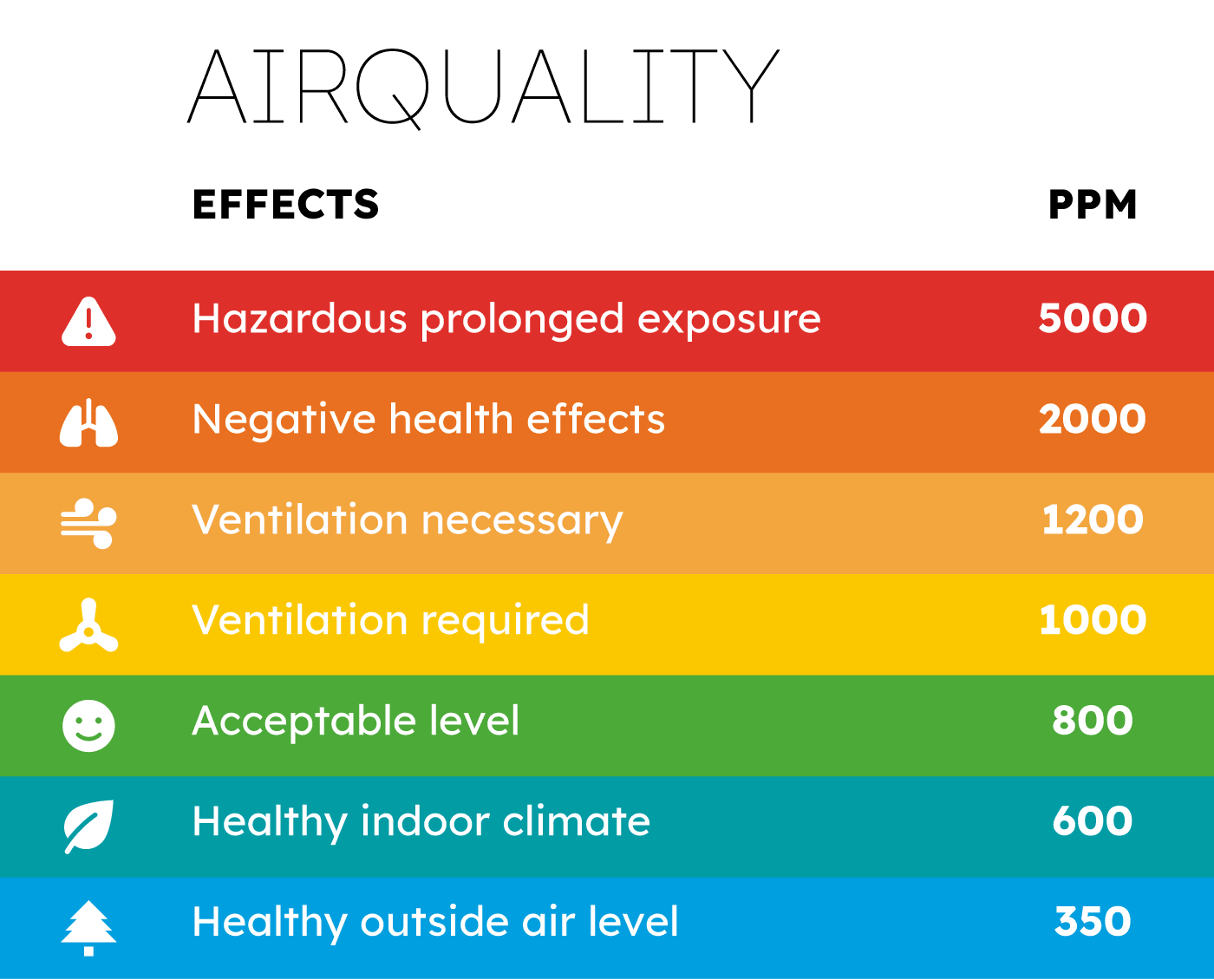
Is It *the* CO2?
Yes it is the same CO2 that scientists are worried about. Annually, human activities release more carbon dioxide into the atmosphere than natural processes can absorb, leading to a progressive increase in atmospheric carbon dioxide levels. The increase in carbon dioxide (CO2) levels in the atmosphere is primarily attributed to human activities, particularly the burning of fossil fuels (coal, oil, and natural gas) and deforestation. These activities release large amounts of CO2, a greenhouse gas, into the atmosphere.
As an illustration, when I was born, the atmospheric CO2 concentration stood at 324 ppm. At the start of this year, a highly reliable measuring station in Hawaii recorded 415 ppm. This station has diligently measured CO2 concentrations since 1957. In the span of just my lifetime, there has been an increase of 91 ppm. Examining the data reveals a substantial spike since the industrial era (pre-1800s), with estimates placing it at around 280 parts per million (PPM) during that period. We know this thanks to ice core data. Ice cores extracted from glaciers and polar ice caps preserve air bubbles that contain samples of the atmosphere from different periods.
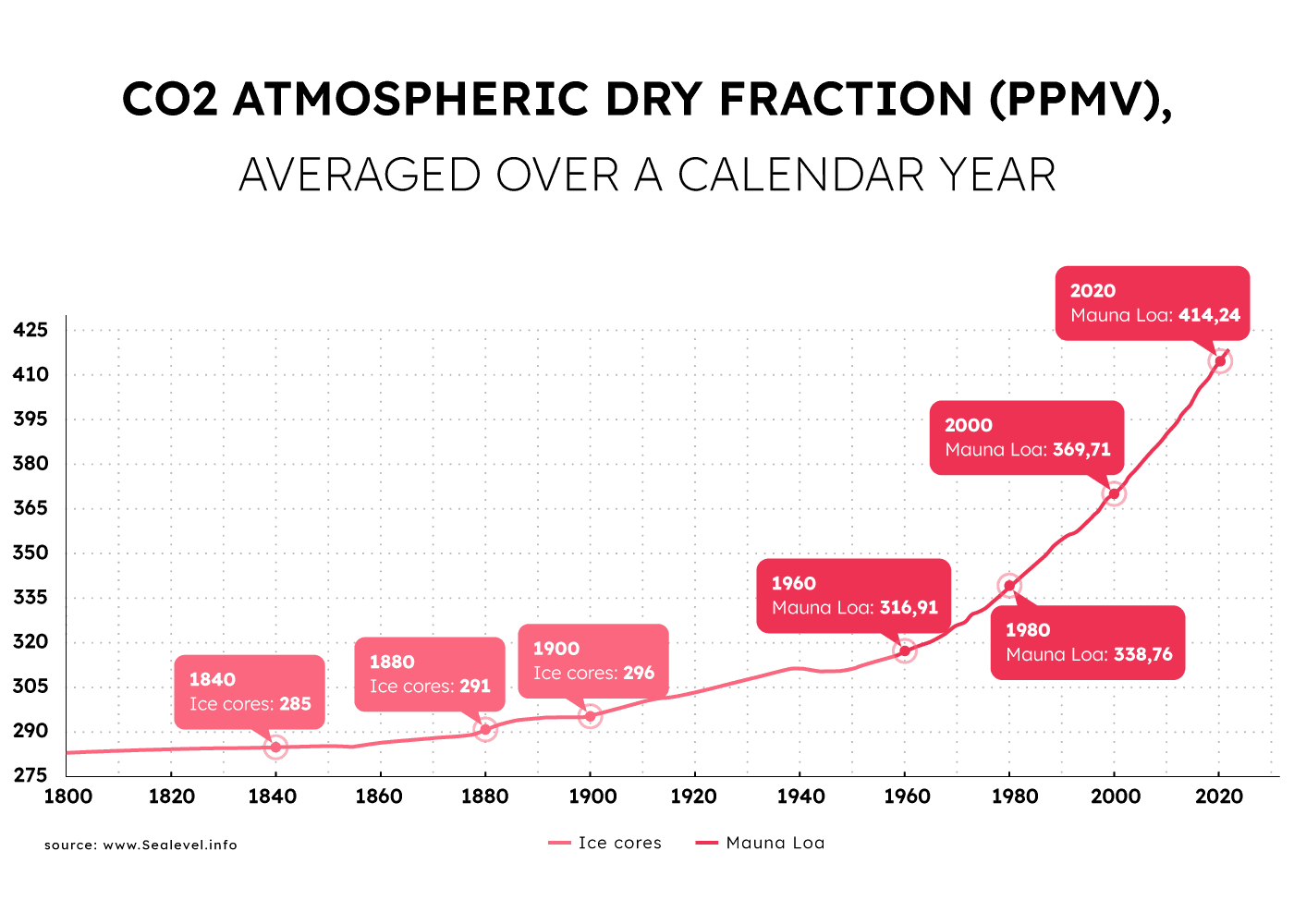
You can read more about the 'Mauna Loa Observatory' in Hawaii at 'ask NASA climate'. Next up I'll talk about another invisible home intruder 'air pollution' and what you can do about it.
Santa Teresa 34
Indulging in a bit of daydreaming never hurts, does it? Picture this: We're embarking on a move to the beautiful island of Mallorca, settling into a charming early 20th-century townhouse nestled in the heart of Soller. If money were no obstacle, how do you envision this dream home? 😊
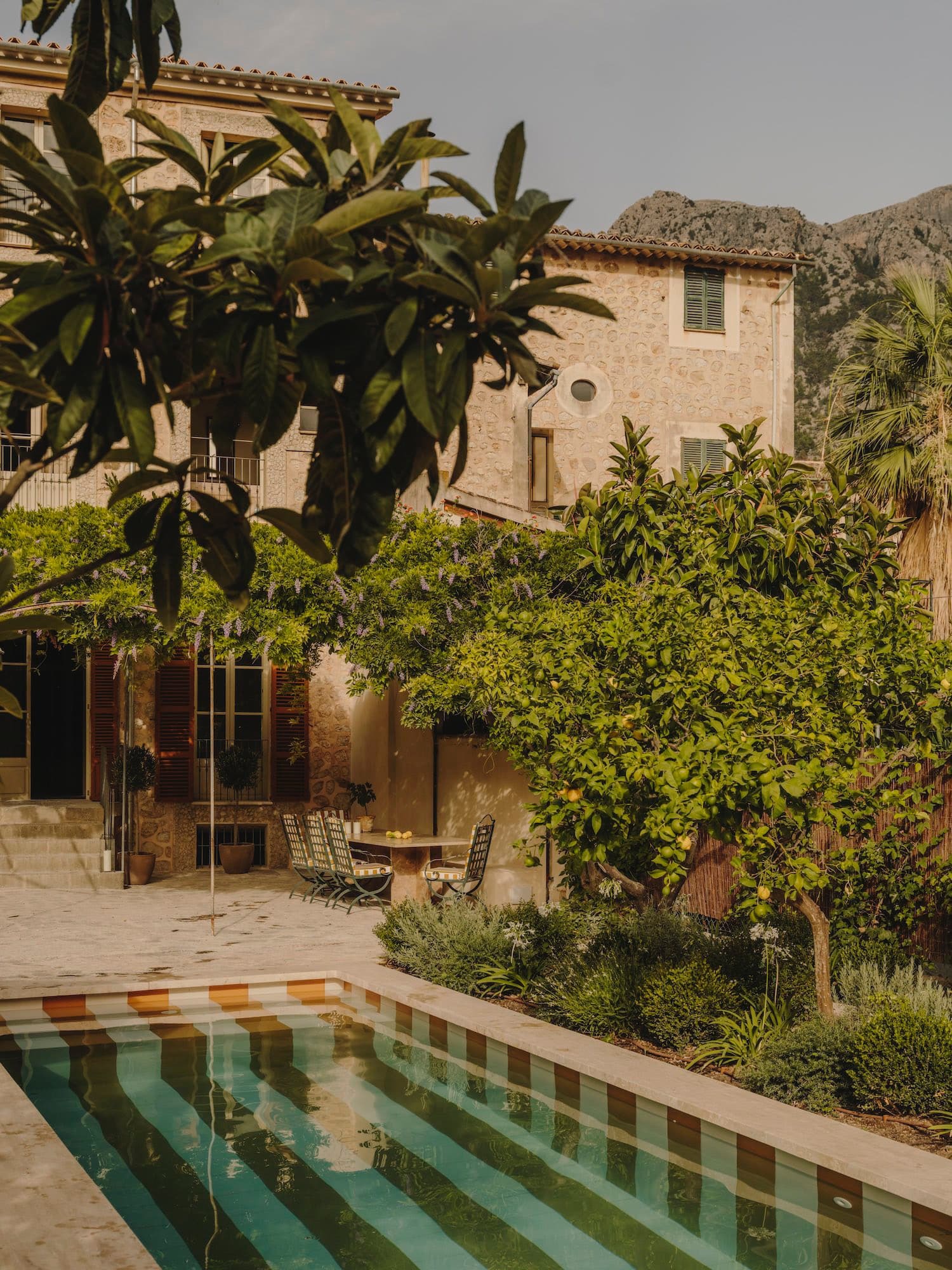
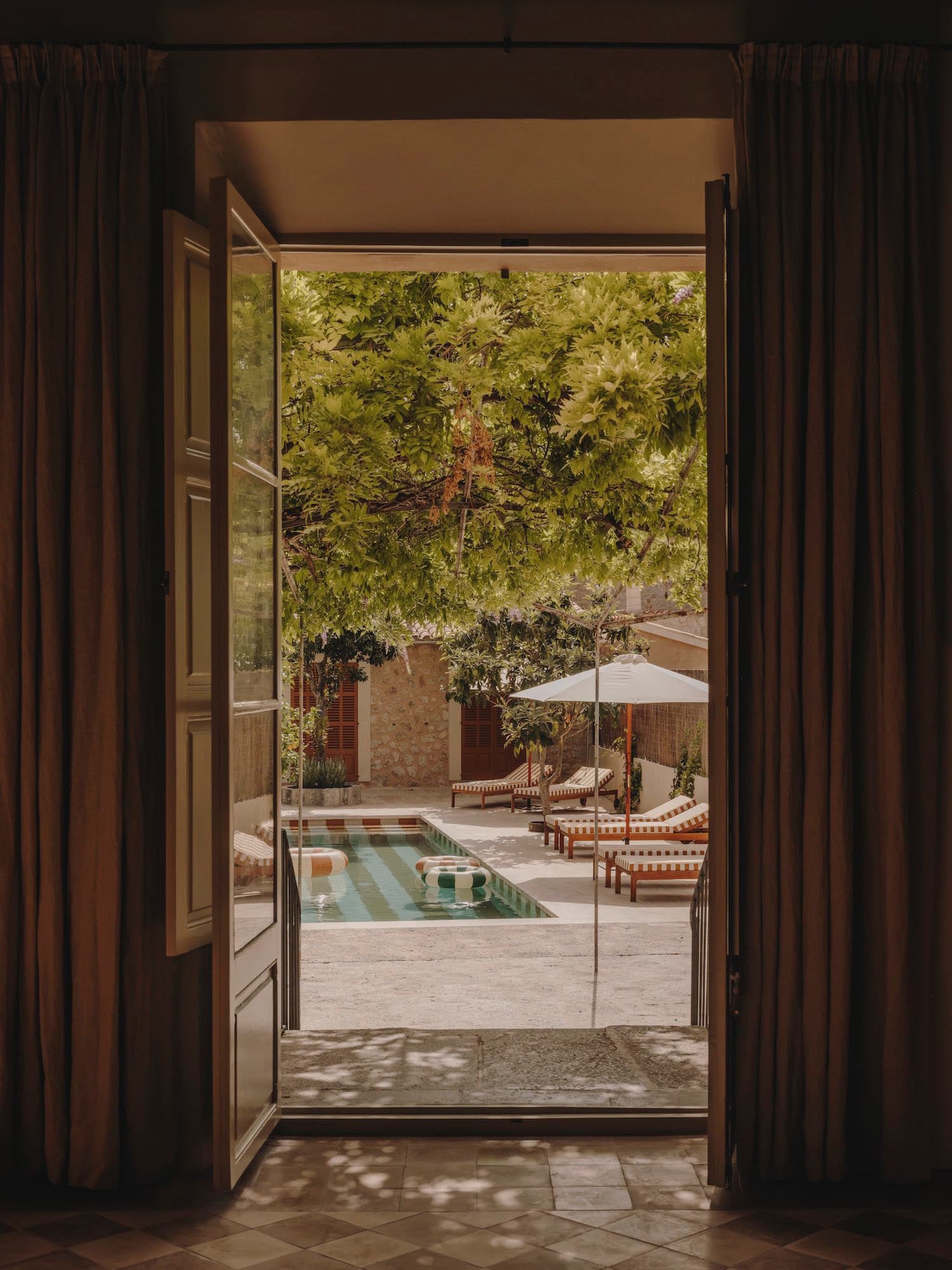
Let's find out!
Our journey takes us to the central square of Soller, where we encounter 'Santa Teresa 34,' a 123-year-old townhouse that bears witness to the rich history and traditions of this quaint coastal town. This magnificent residence was initially commissioned by a wealthy entrepreneur from Puerto Rico, who integrated numerous refined design features, including a meticulously crafted stone facade and a breathtaking spiral staircase, to name just a couple.
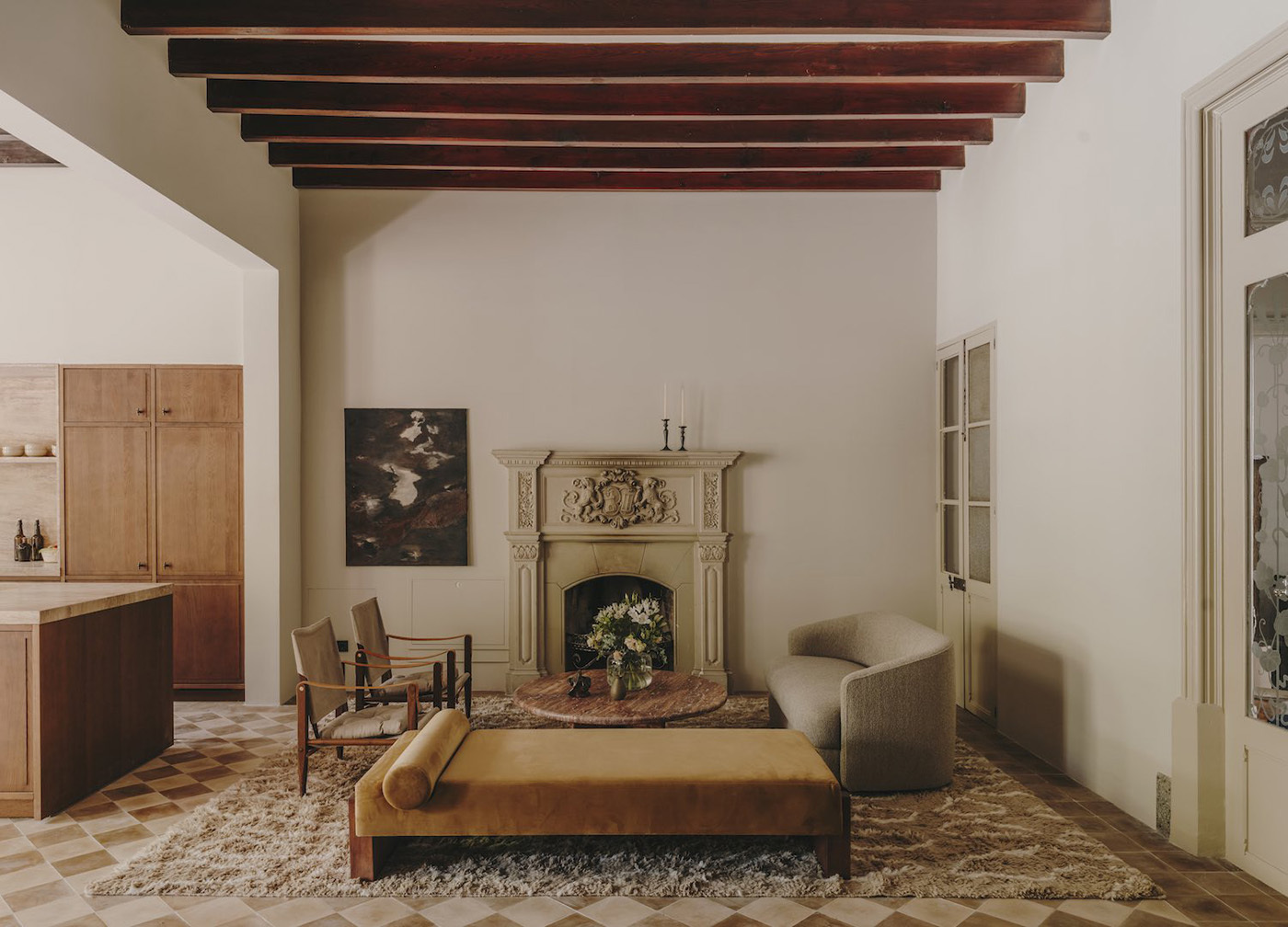
The interiors feature a mix of custom-designed furniture, curated designer furniture and well-sought-out antiquities.
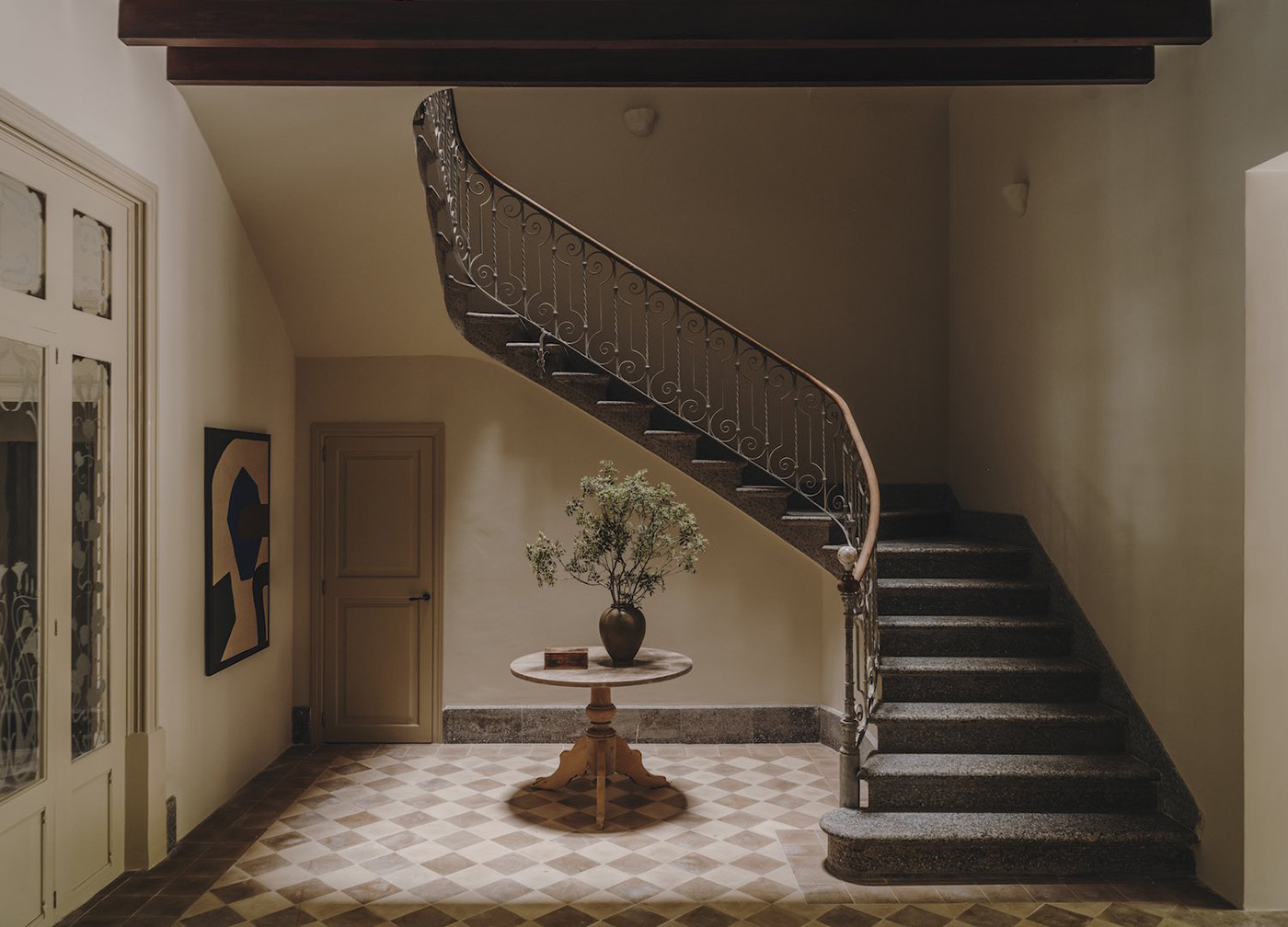
The spectacular spiral staircase is one of the defining features.
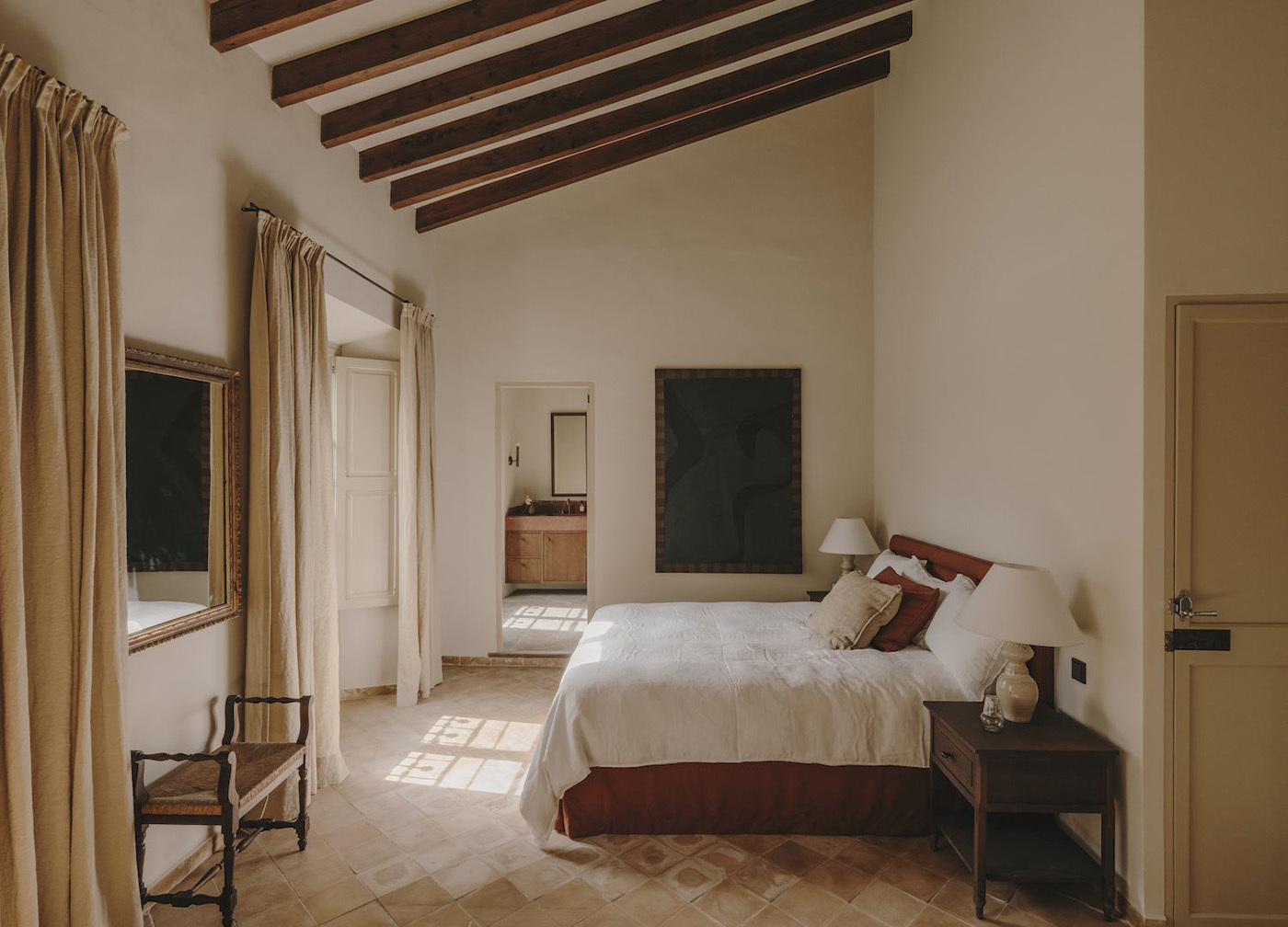
Renovating a structure of this caliber is truly unique, a mission undertaken by the Mallorca-based couple behind Durietz Design & Development. They have established a prominent presence in the Spanish residential design arena, specializing in the conversion of historic properties into distinctive, fully furnished homes meticulously crafted for resale.
Santa Teresa 34 is a project born out of love with an extraordinary amount of time devoted to respectful restoration, custom-designed furniture, curated designer furniture and well-sought-out antiquities.
This property is comprised of both a primary residence and a detached guest house, set amidst a lush garden and an expansive pool area that separates them. Thanks to its generous floor plan – the main house spanning 550 square meters and the guest house covering 50 square meters – Durietz Design & Development was able to effortlessly create a total of six bedrooms, each complete with a double bed and a private ensuite bathroom. There's also a wine cellar, a guest house, a home office, an open-plan kitchen, two living room areas with open fireplaces, and an Italian-inspired pool.
The outcome is truly remarkable, an interior that radiates a serene and soothing ambiance. Just to inform you, it's currently available for purchase, and the listing is marked with 'Price on Request,' which speaks for itself.

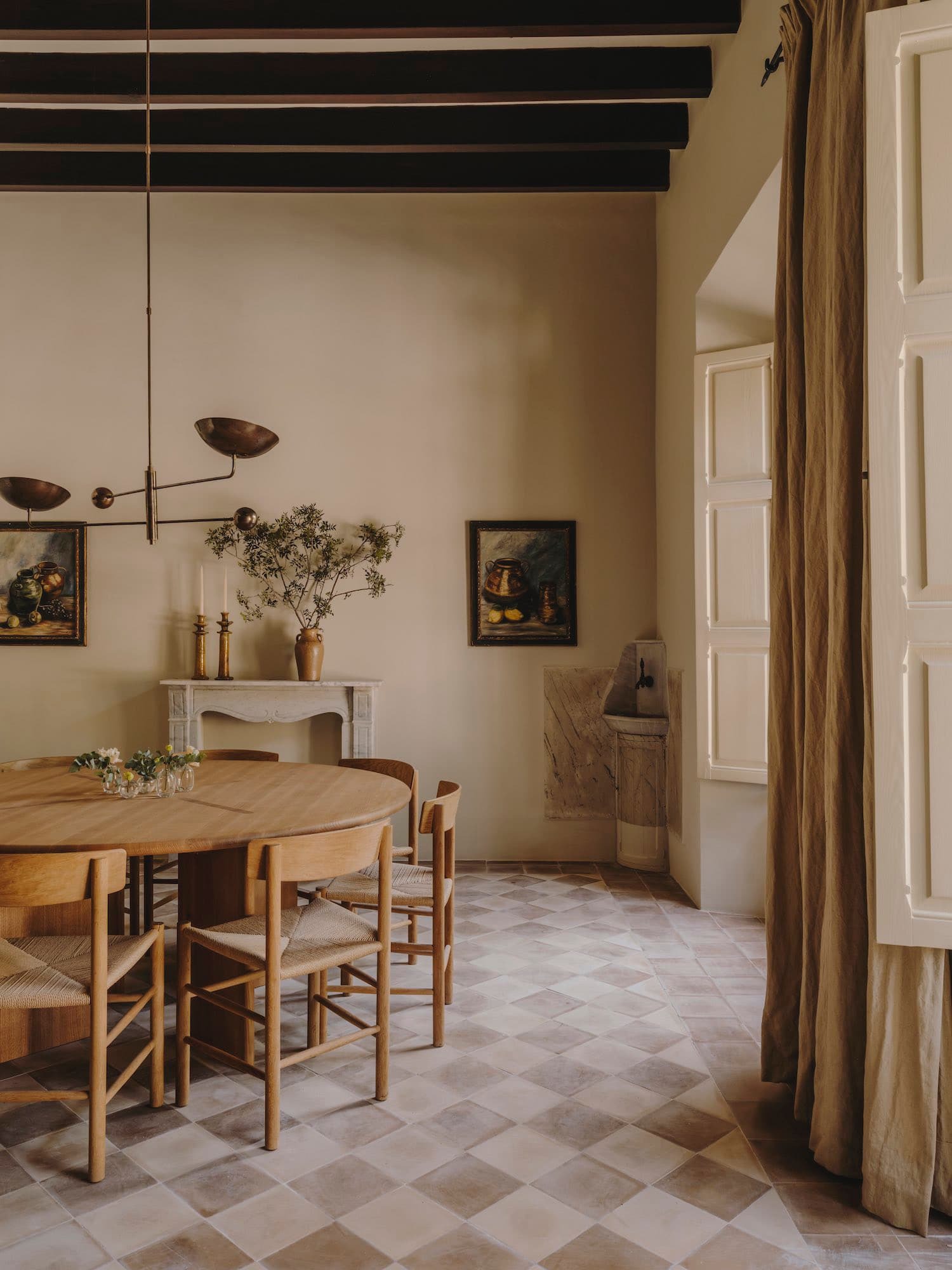
The tinted-oak kitchen and bathroom cabinets were custom-designed by Durietz Design & Development in collaboration with local kitchen maker Cocinart.
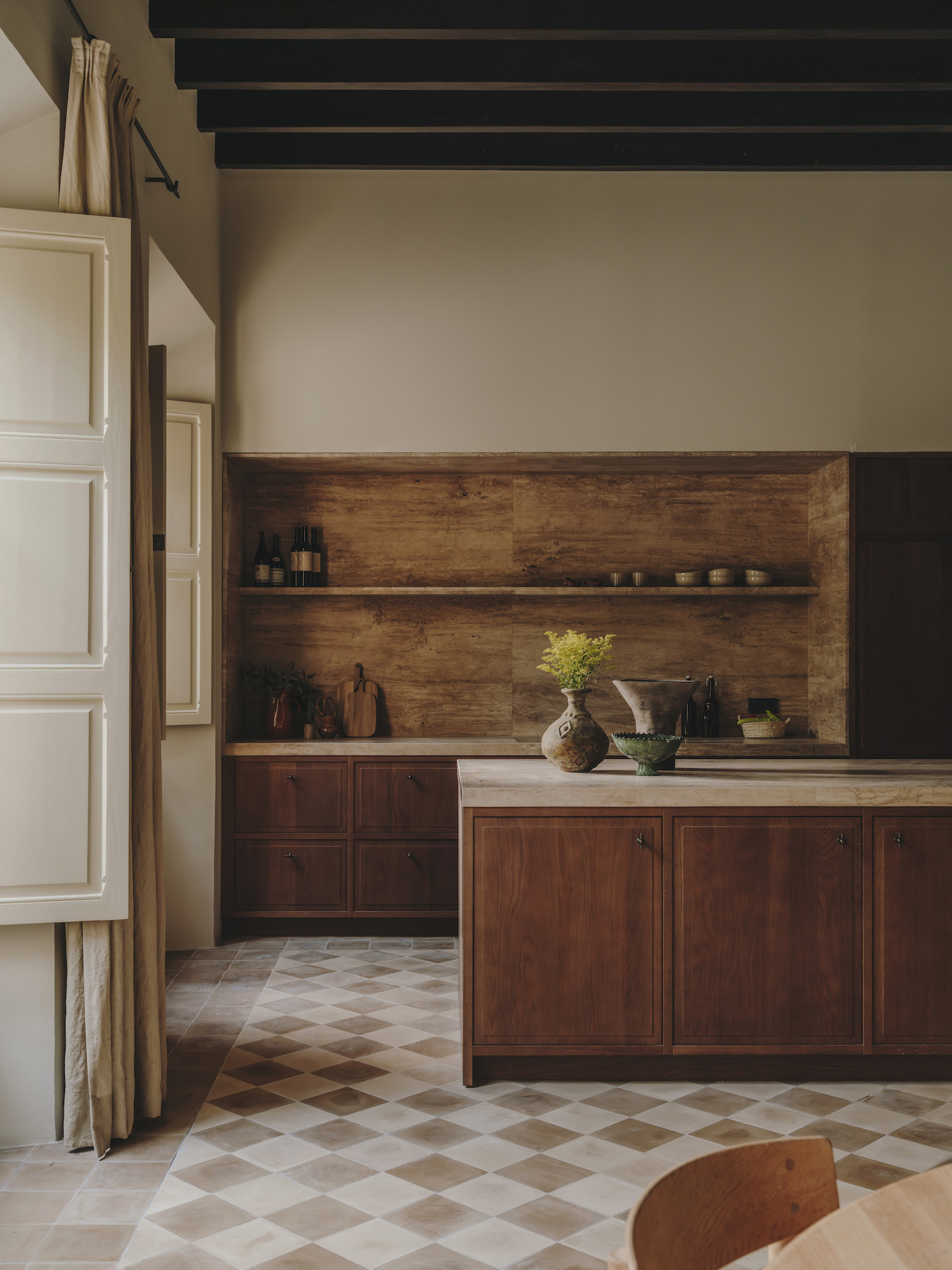
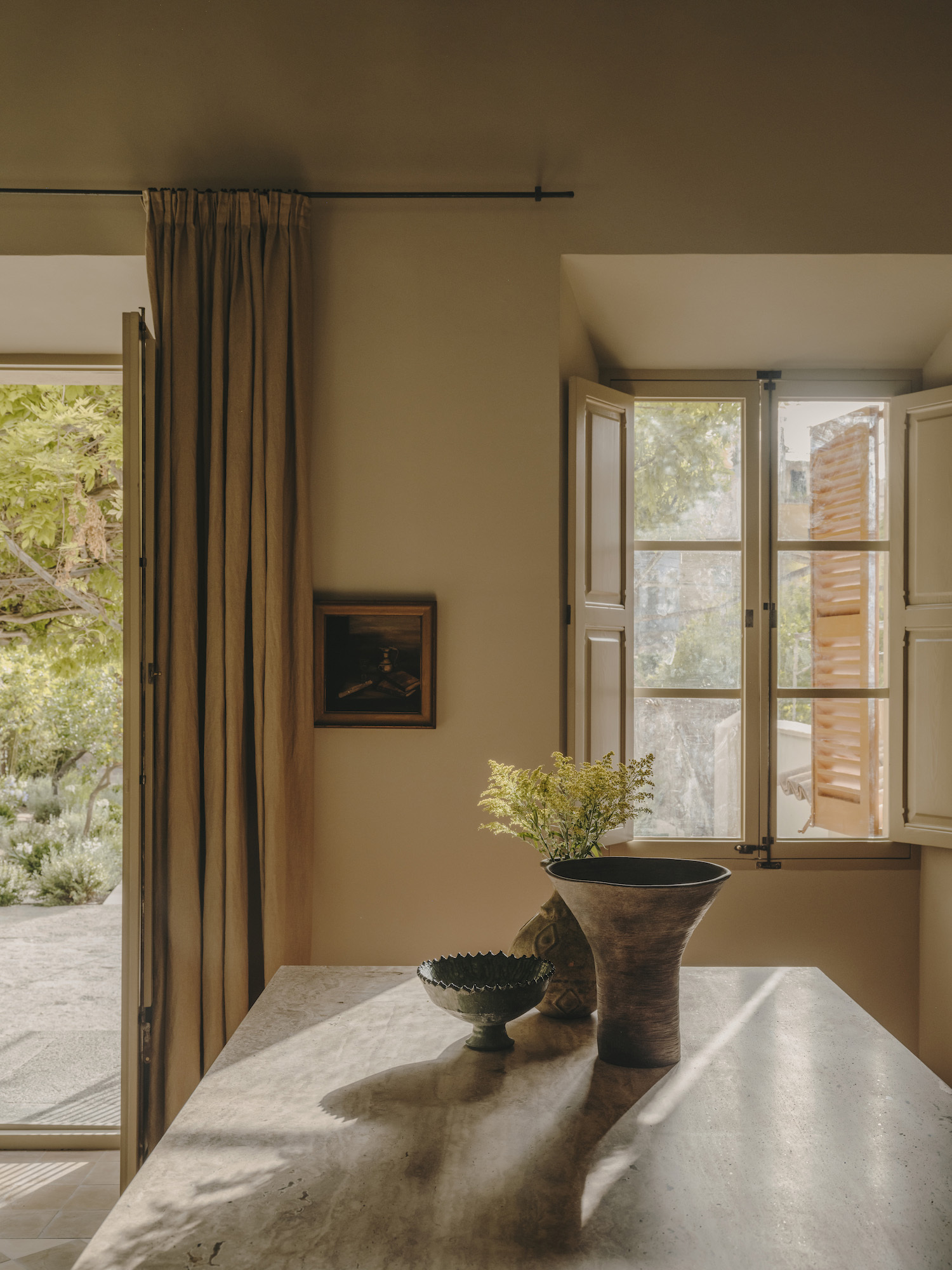
Photos by Durietz Design & Development
A Minimal, Modern Black Home
I once saw a wood-burning technique from Japan in the Apple TV series called 'Home'. If I remember correctly it was in Maine and I think it was in season 1. The outside of this house reminds me of that.
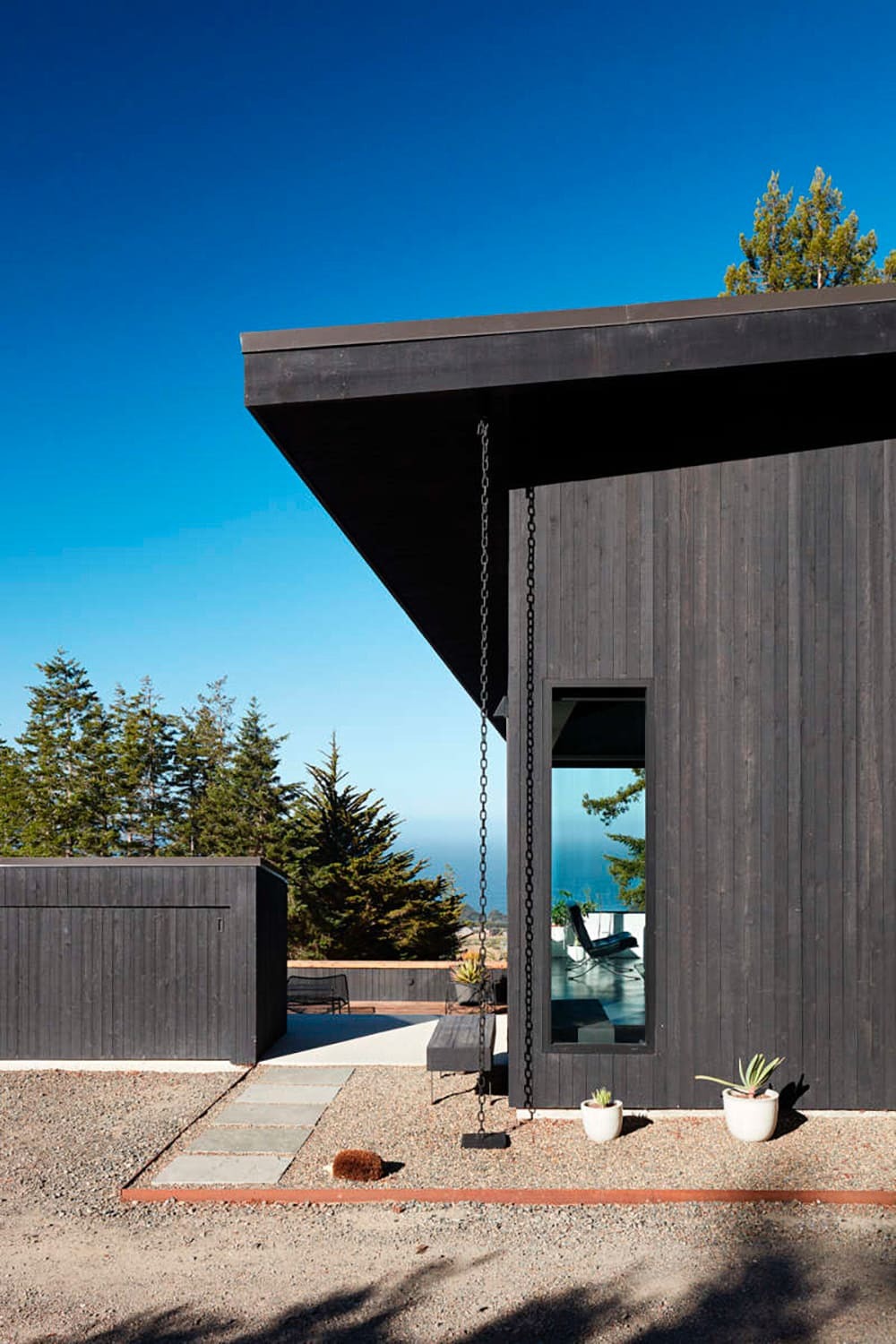
This house is the result of architect Geoff Campen and designer Diana Ruiz taking matters into their own hands and designing their own home at The Sea Ranch in Sonoma County, California. Super location with the ocean in front and trees in the back. The roof is quite special. The art/design studio is my favorite.

